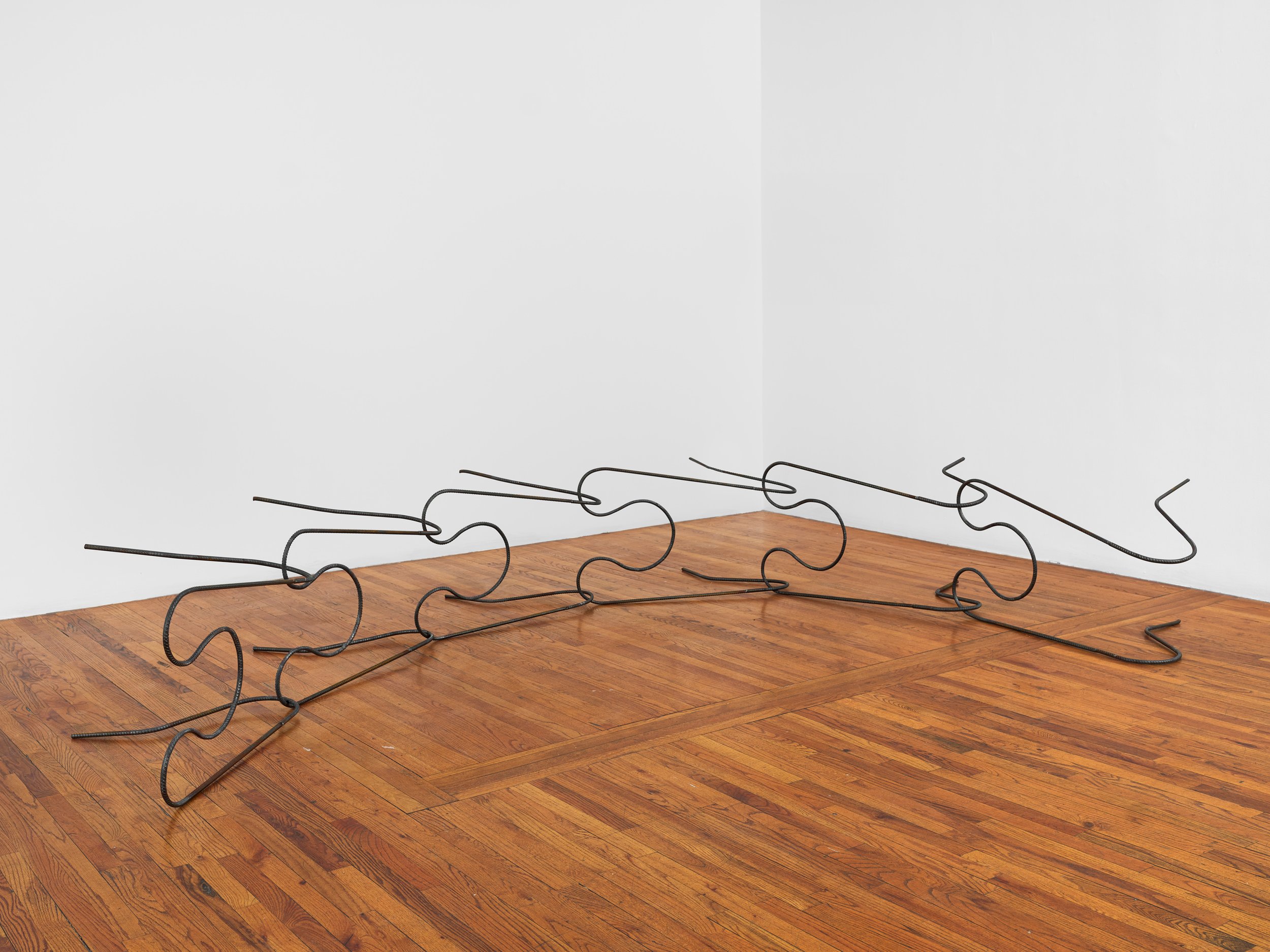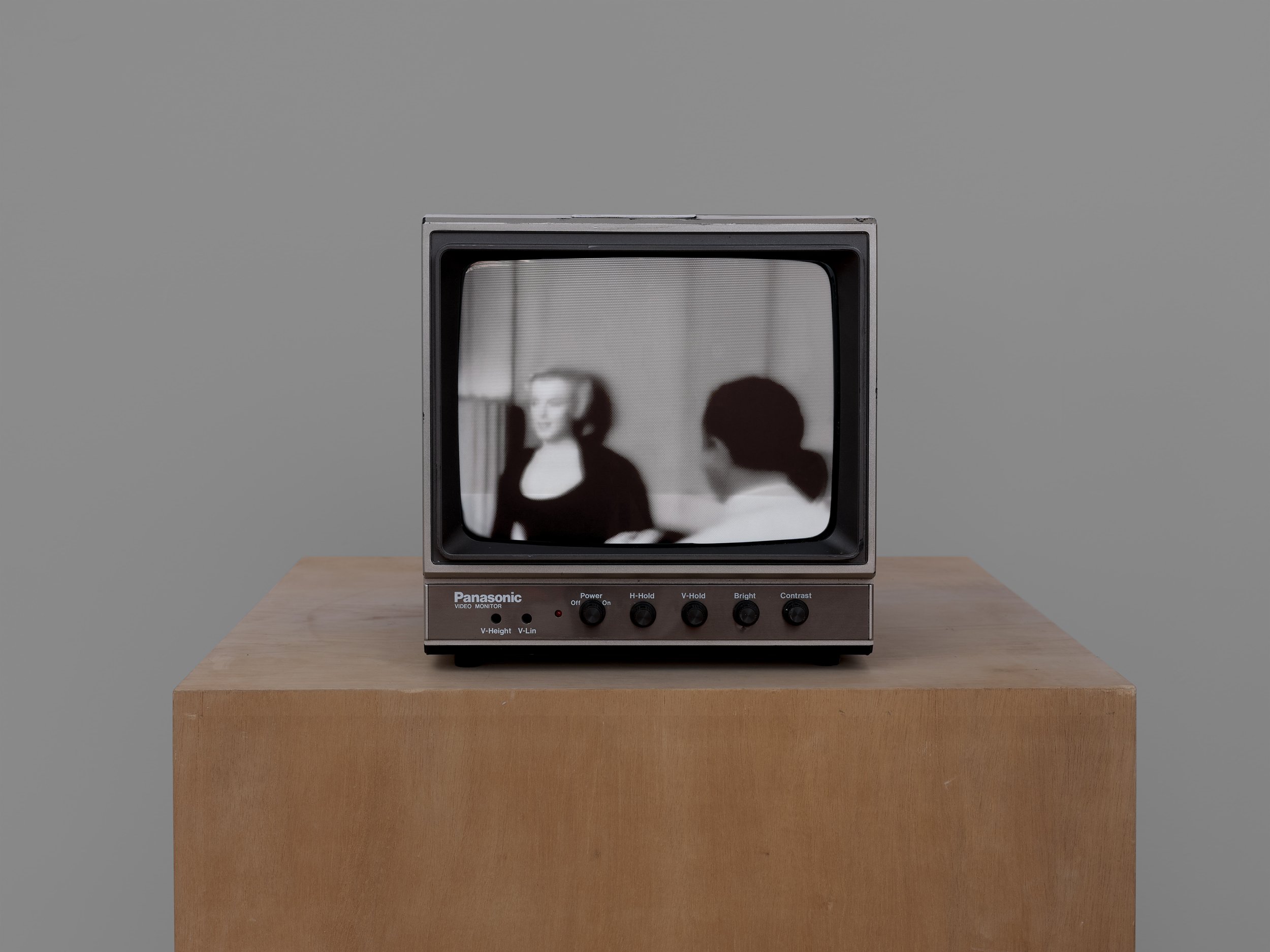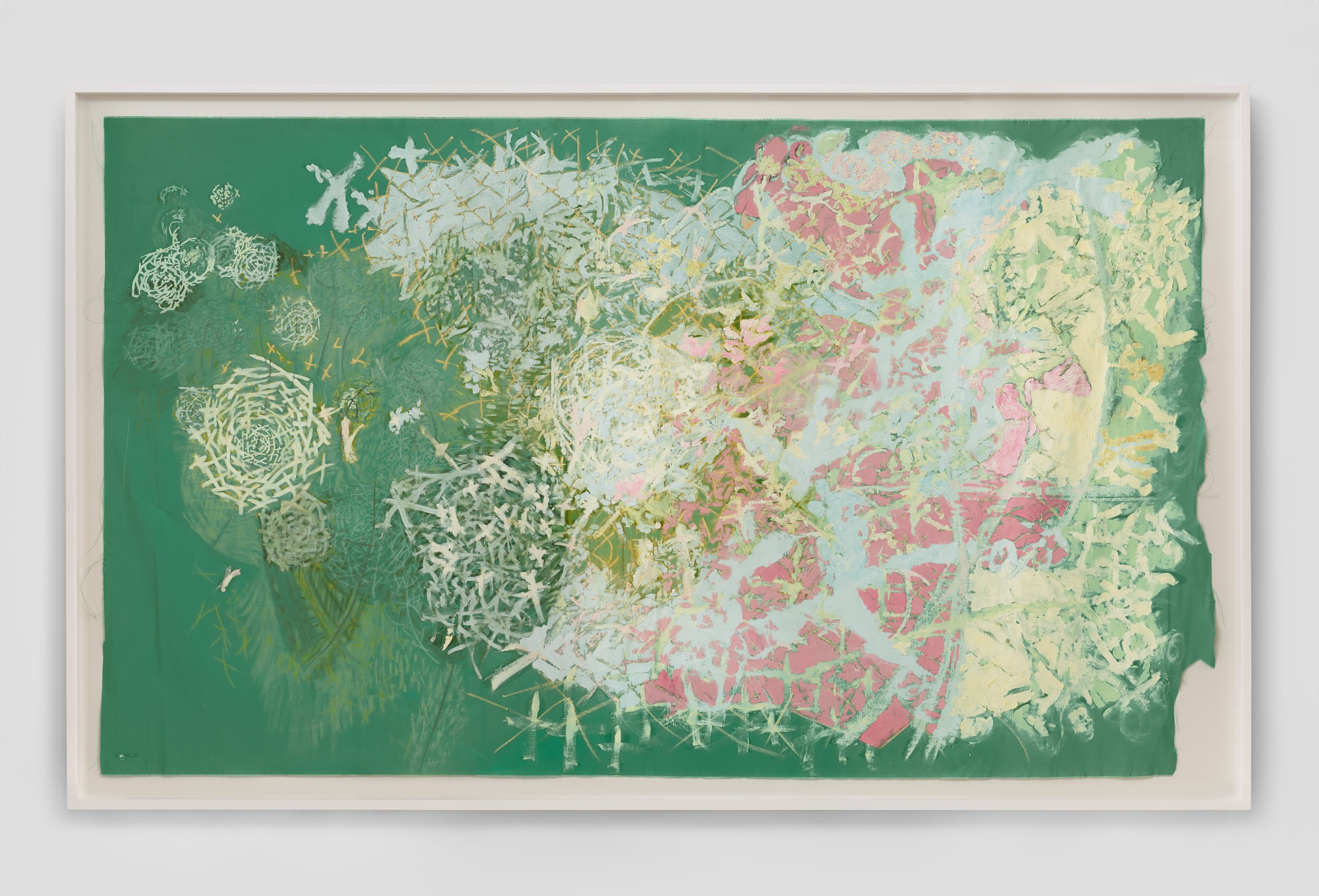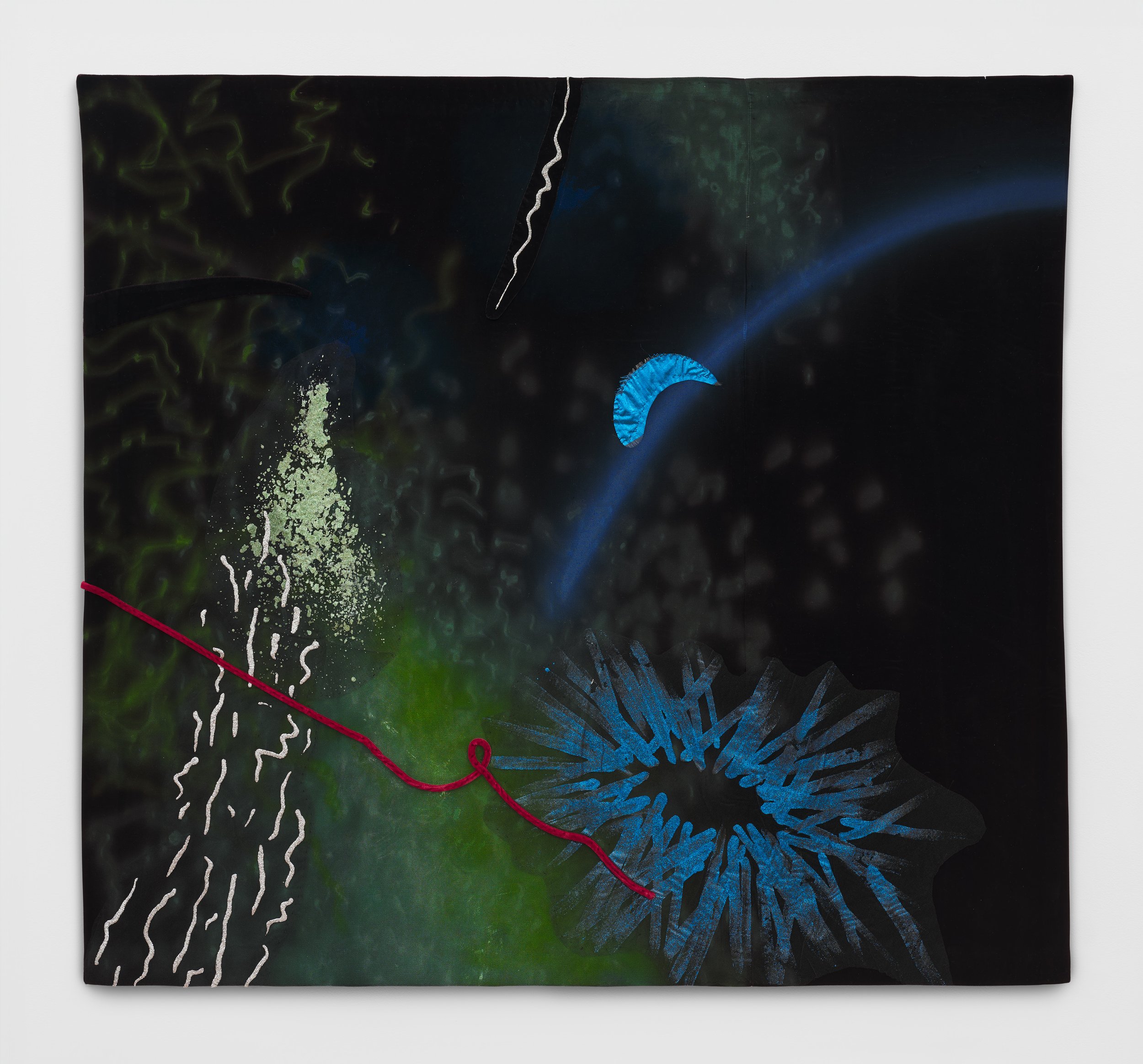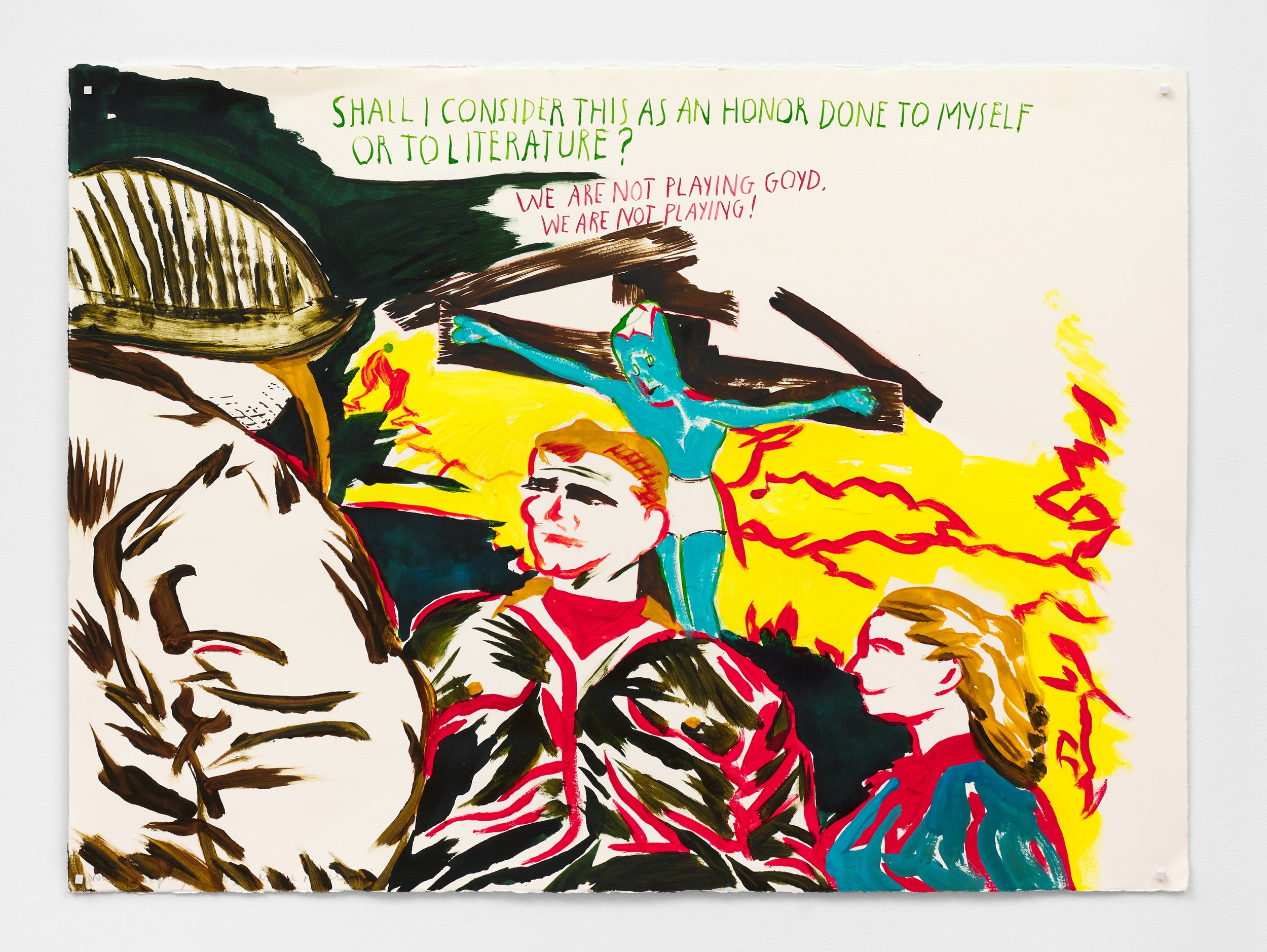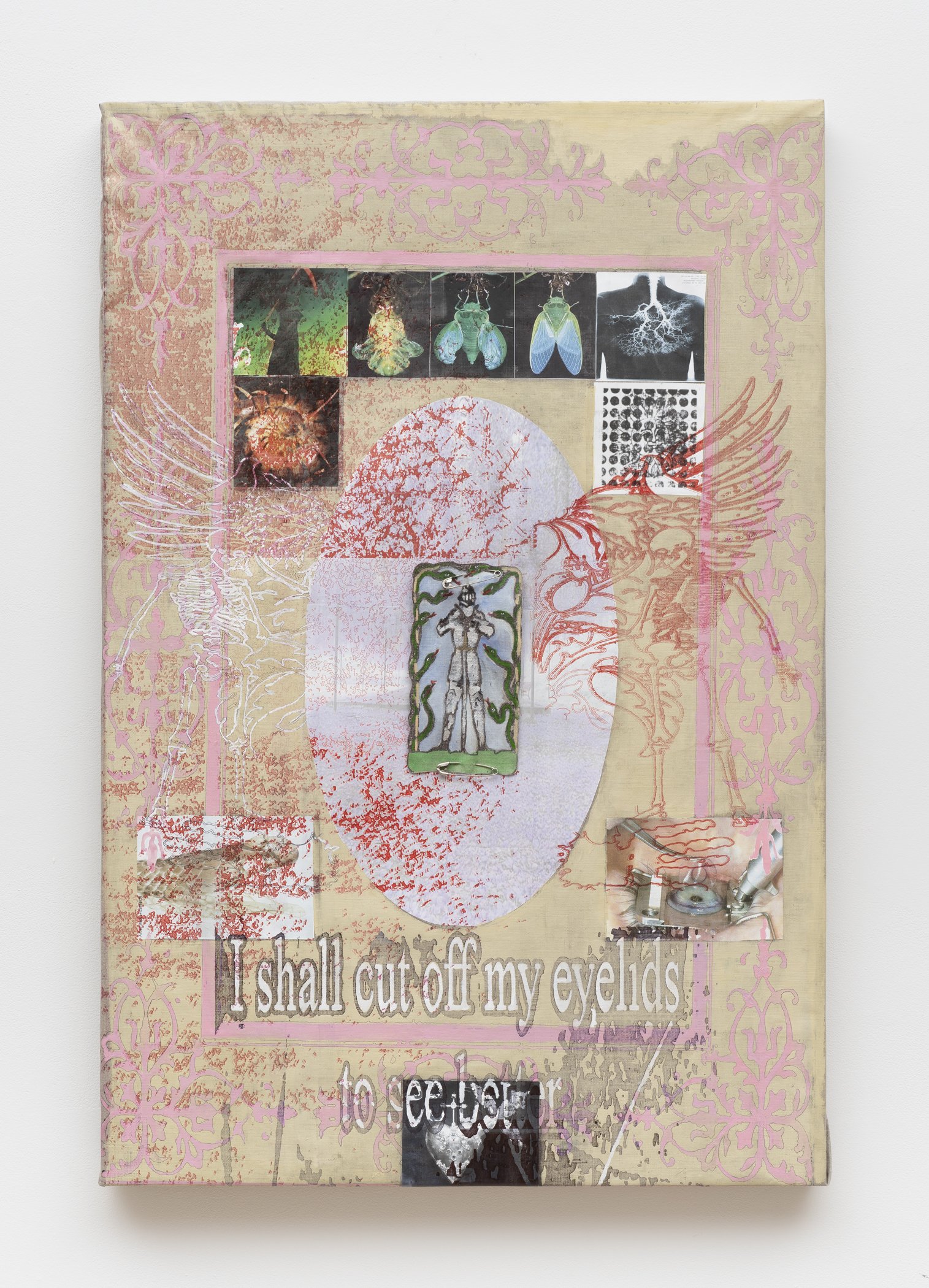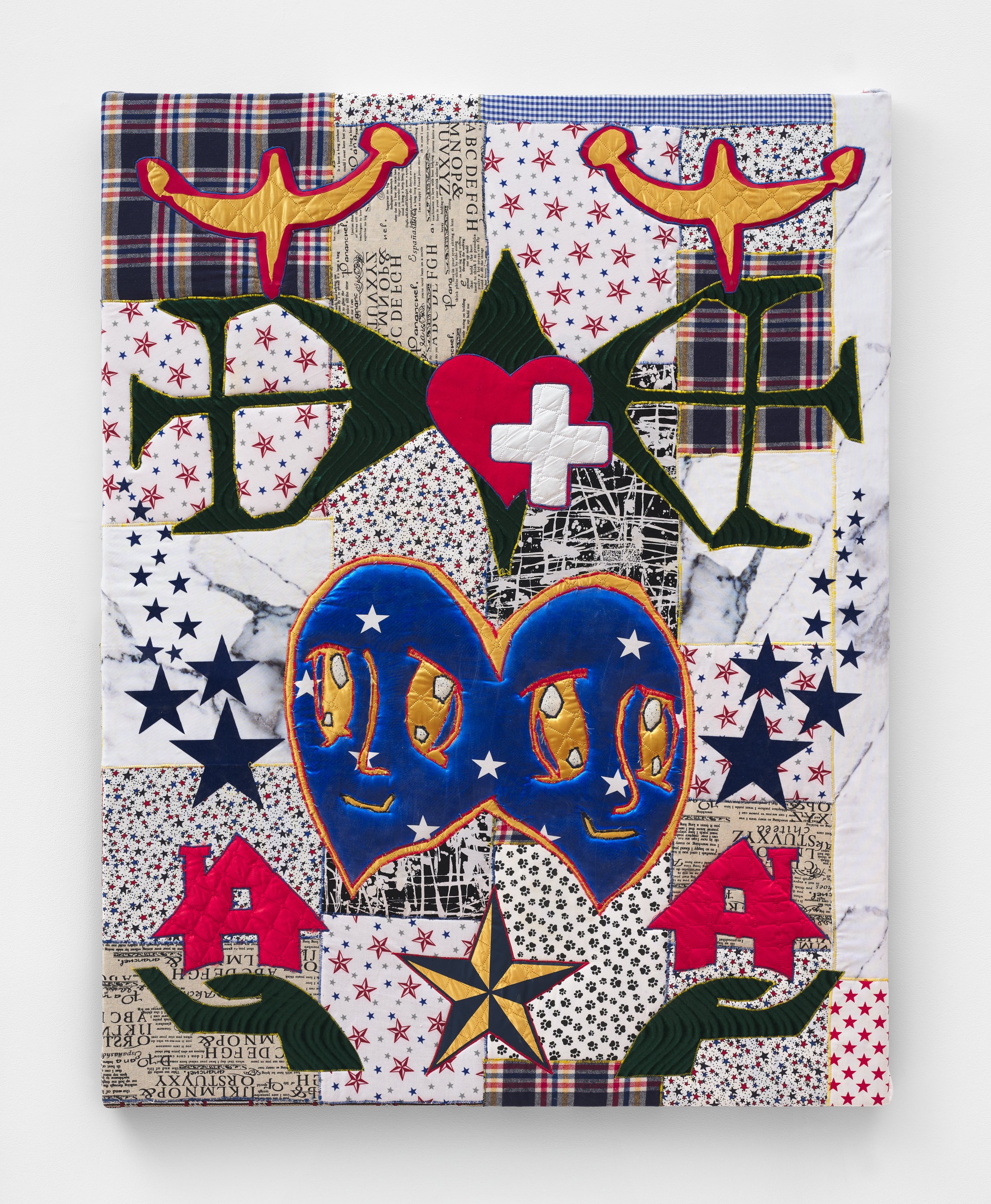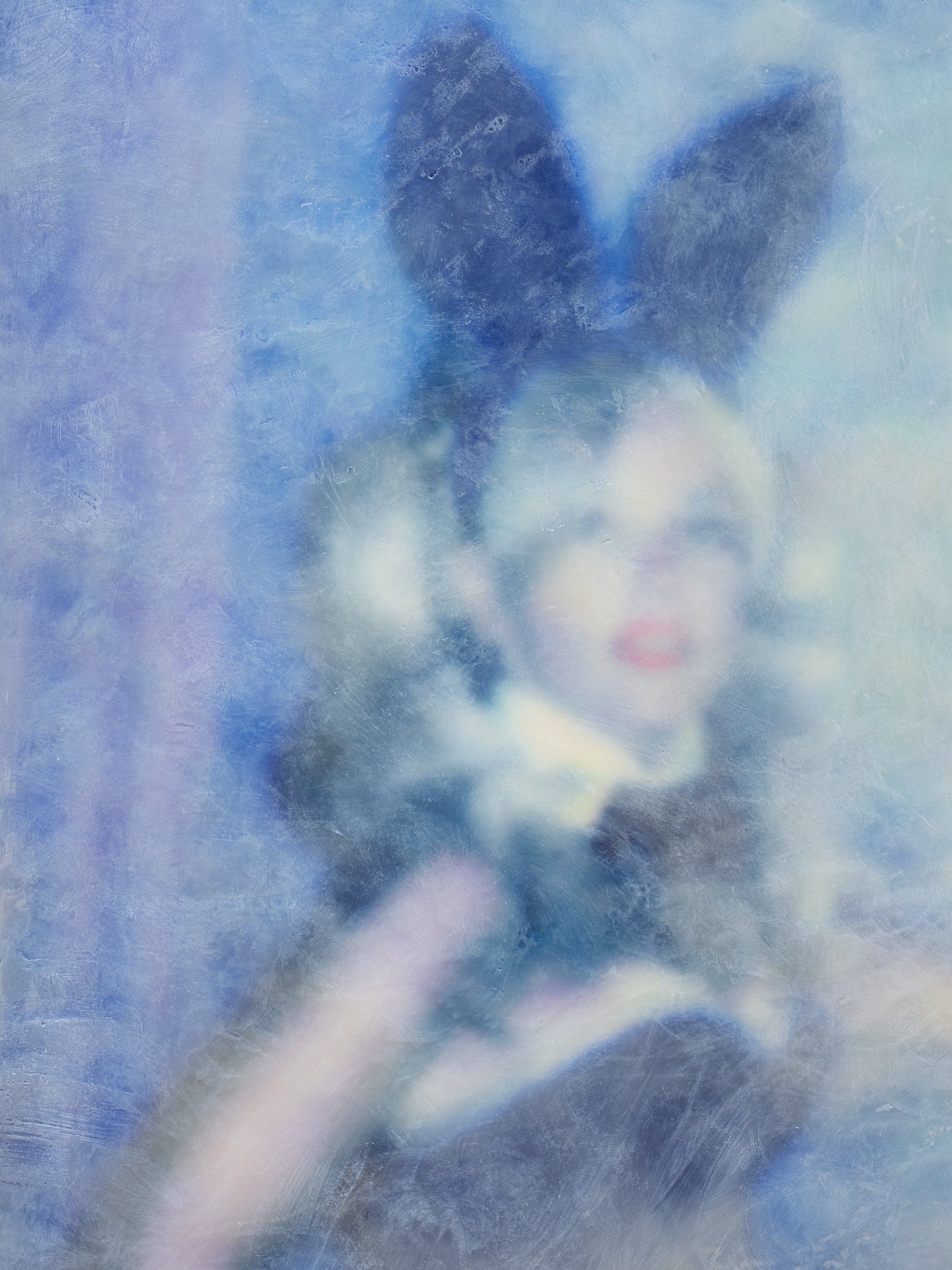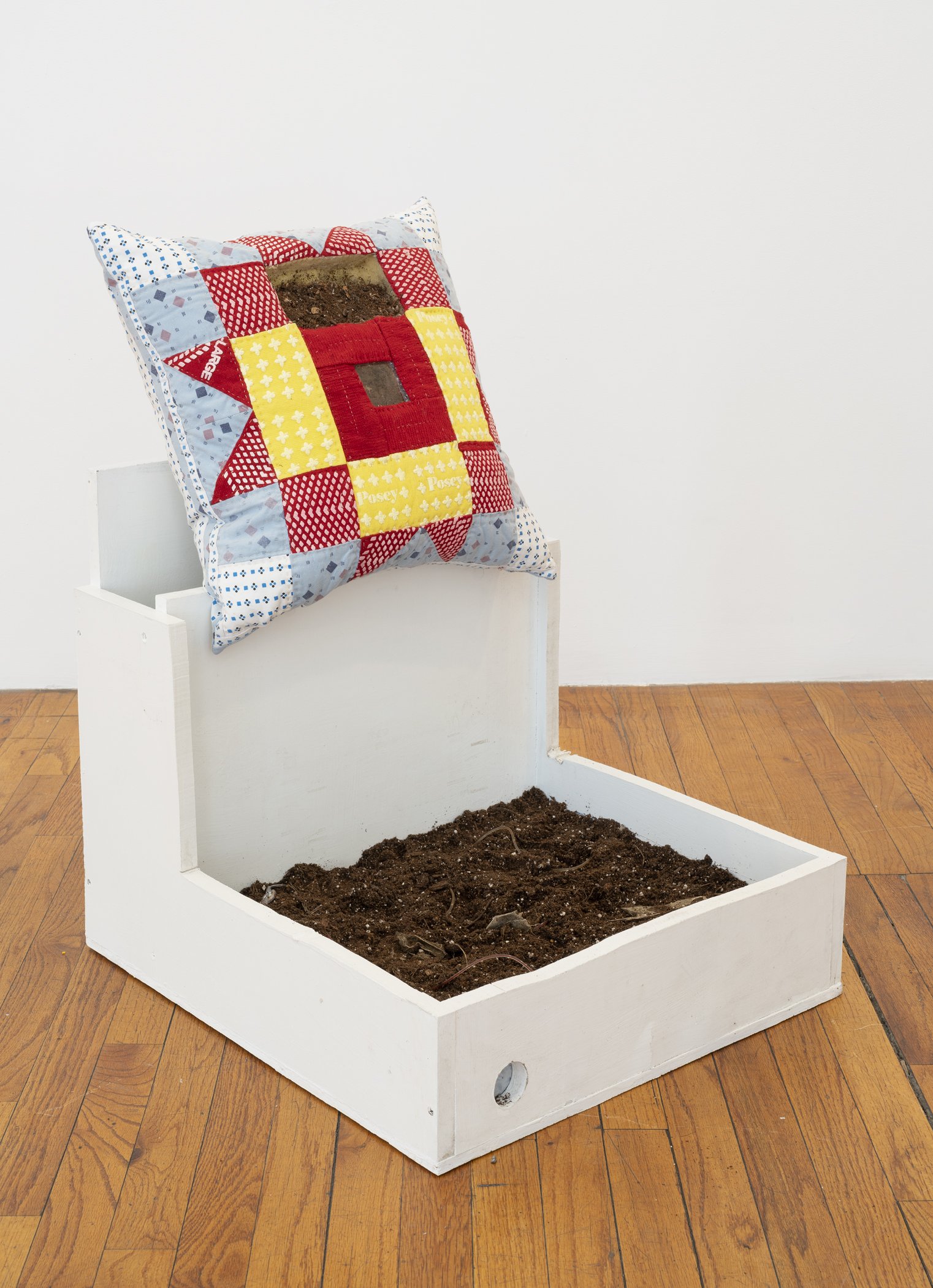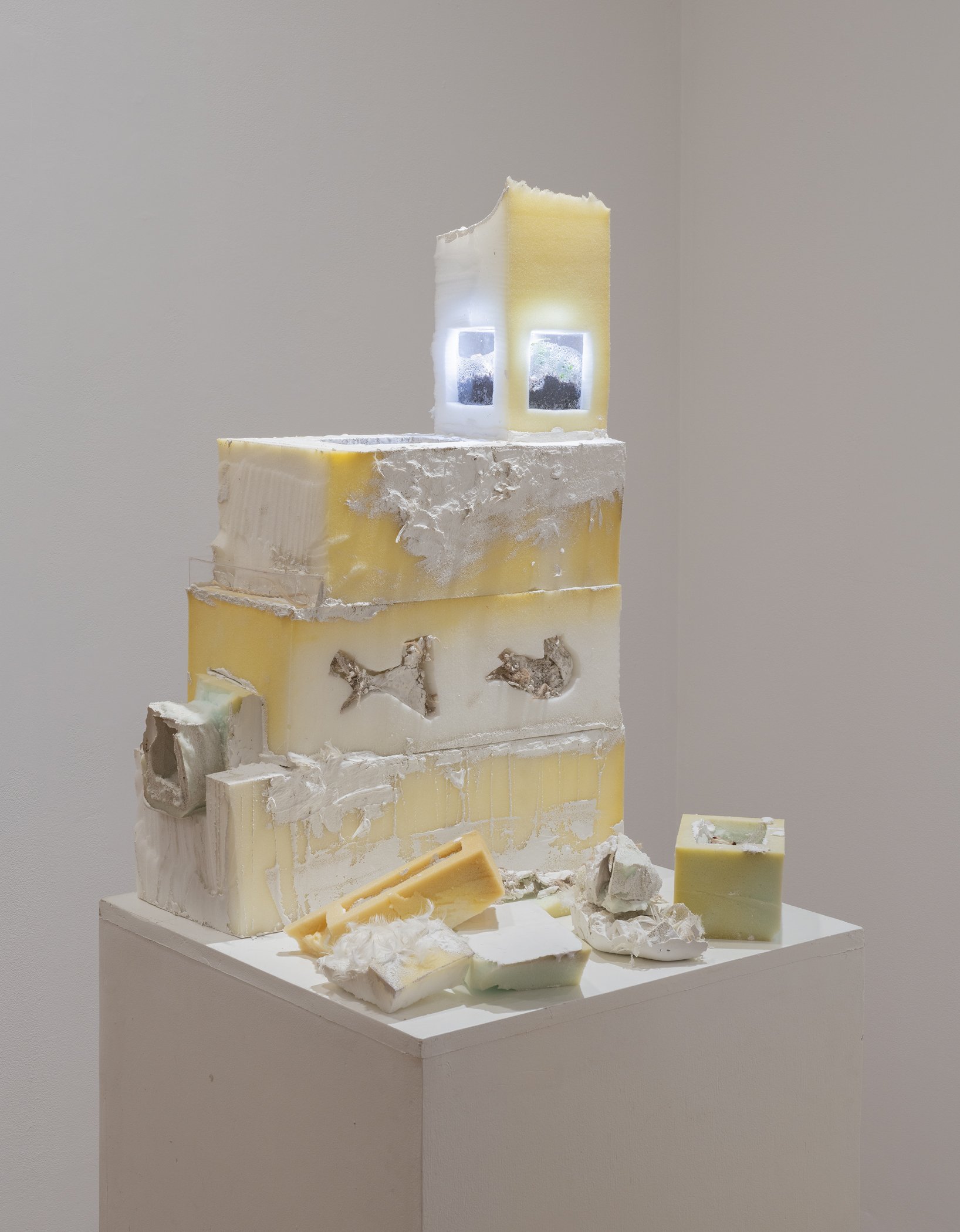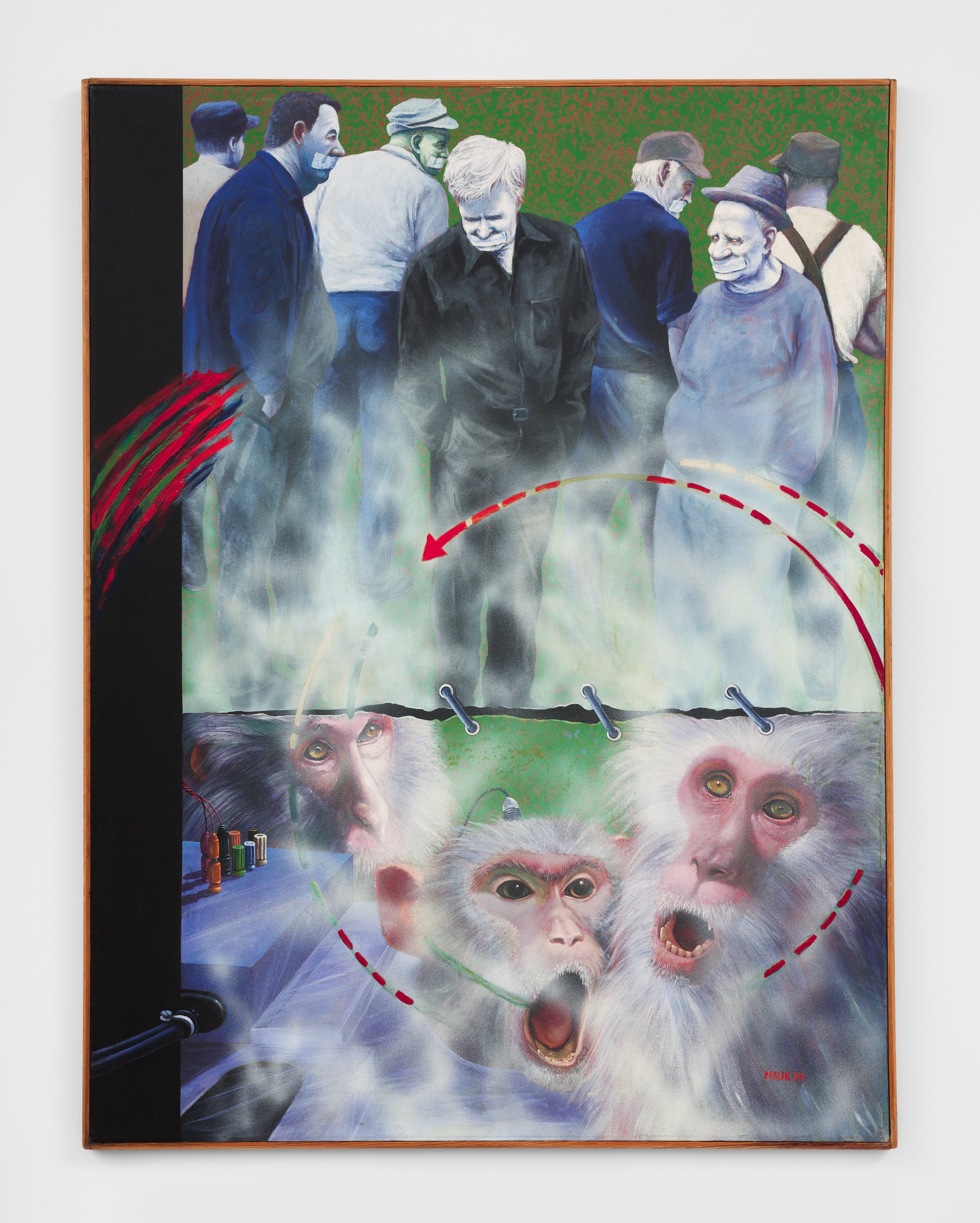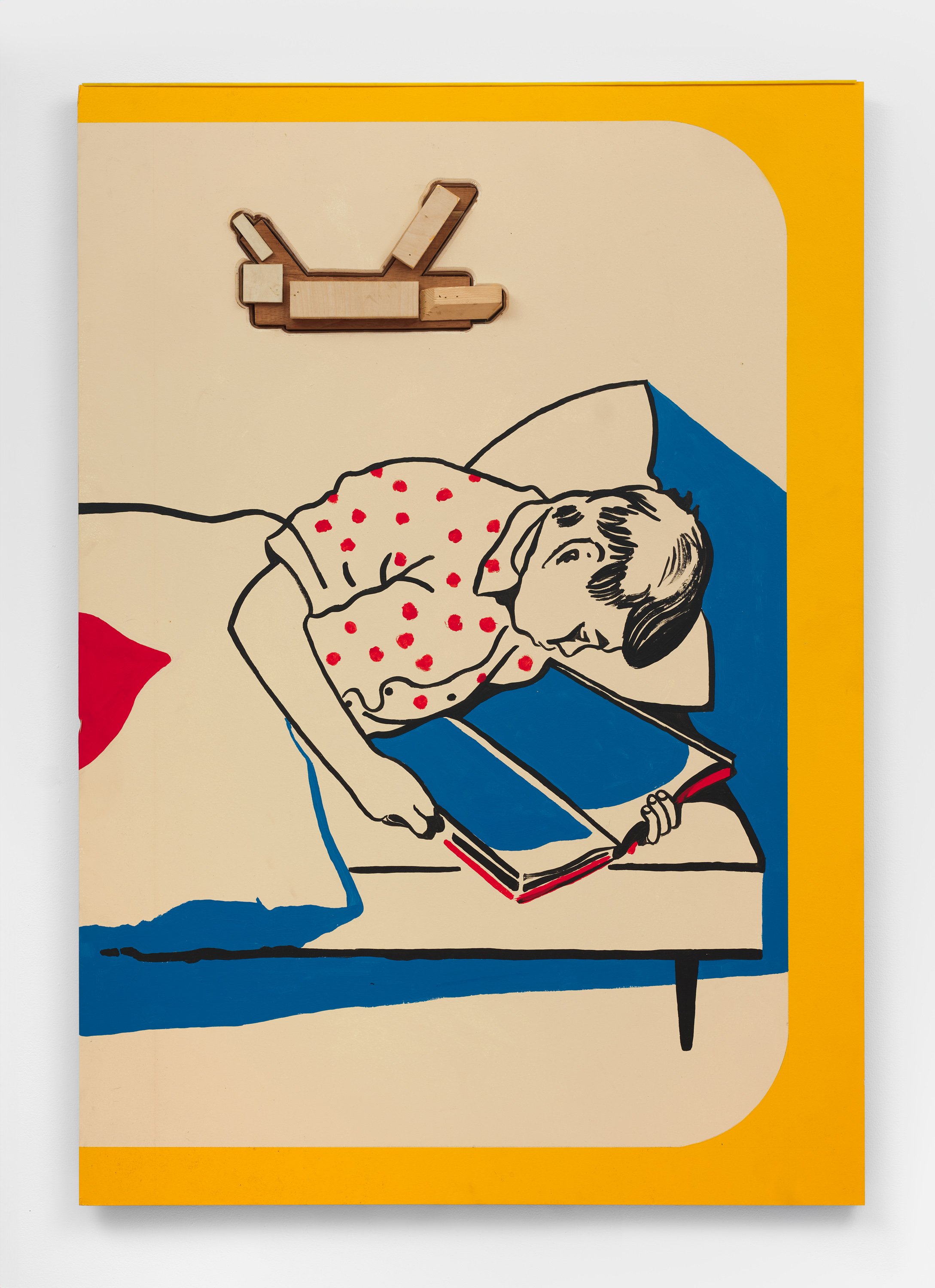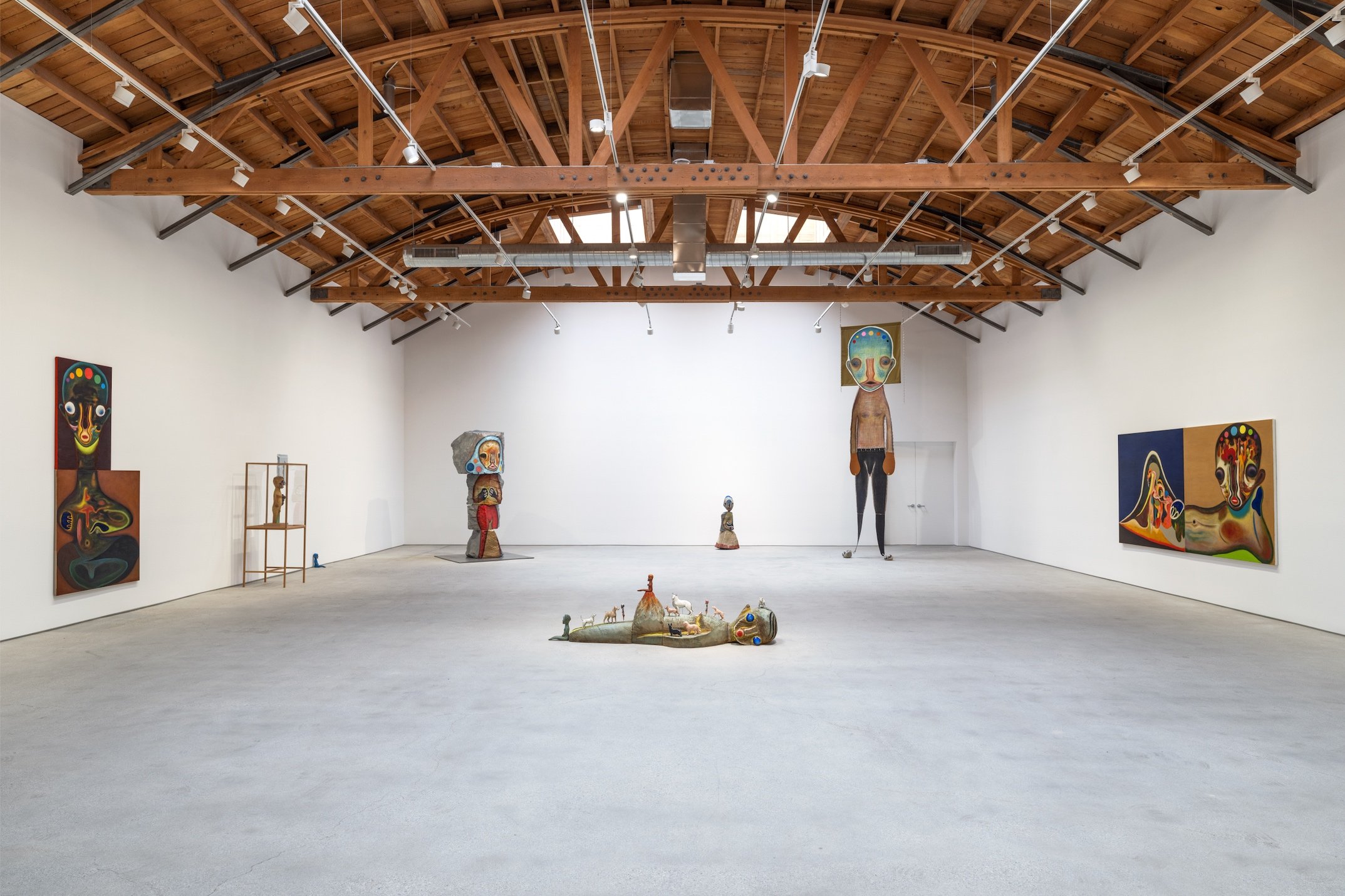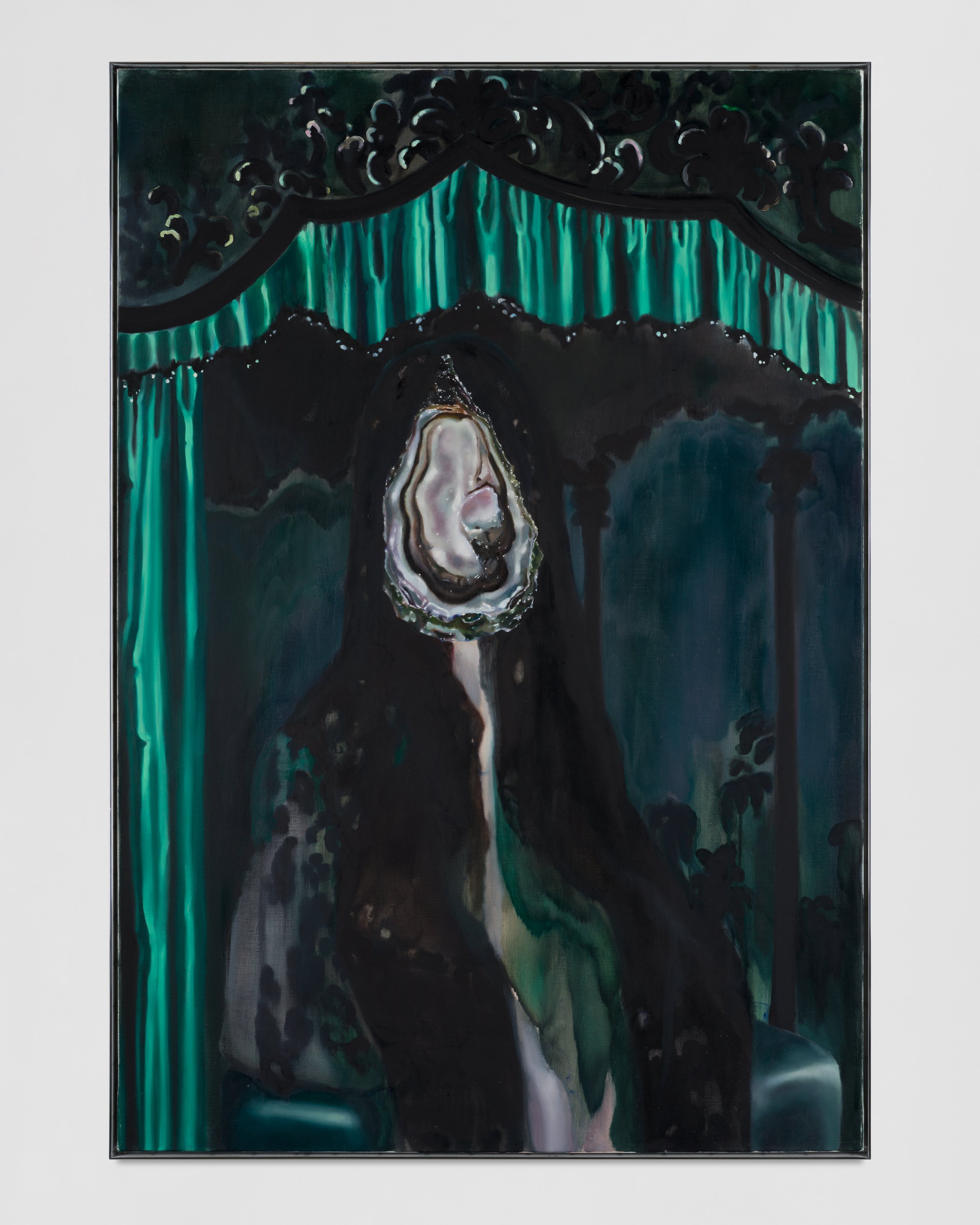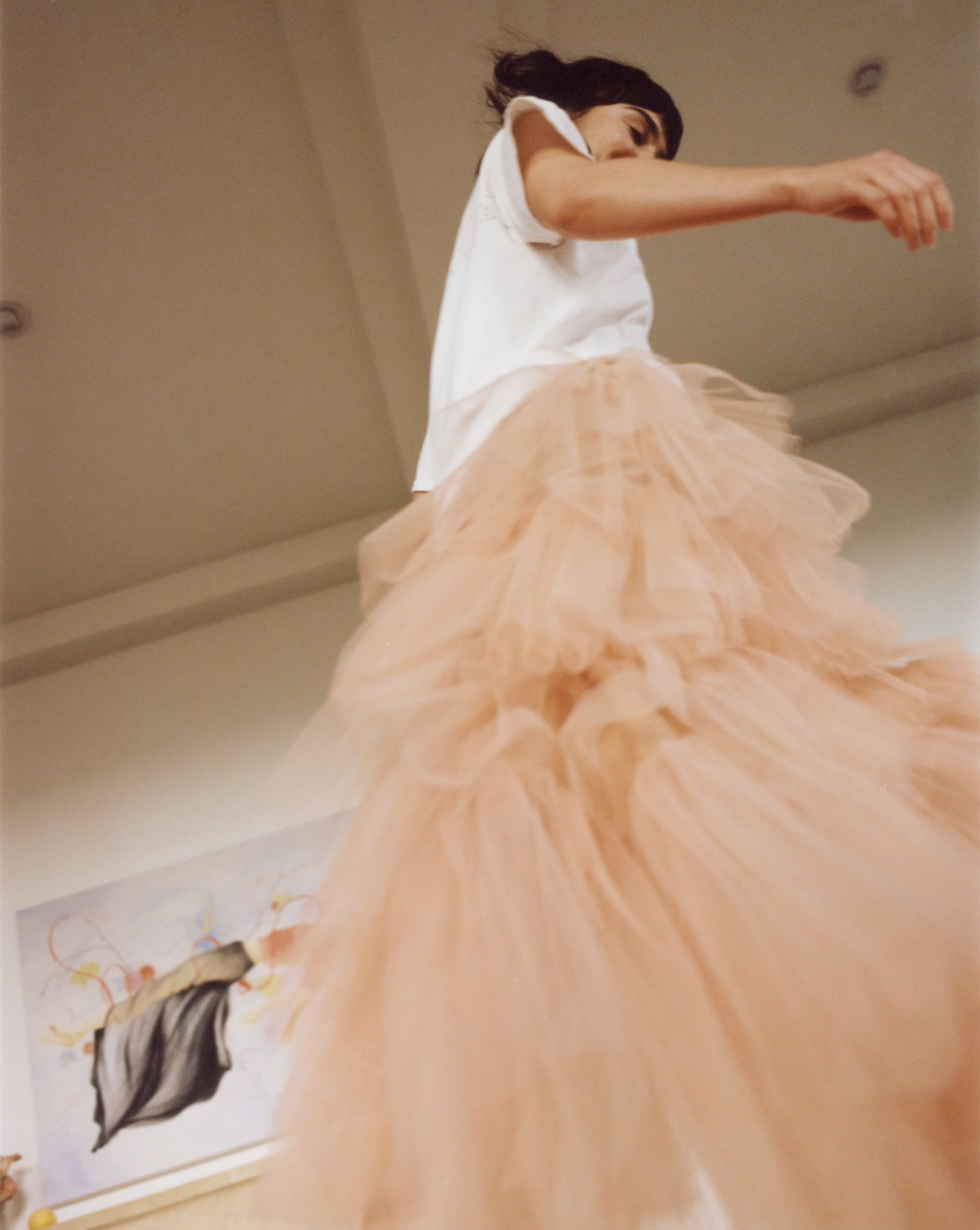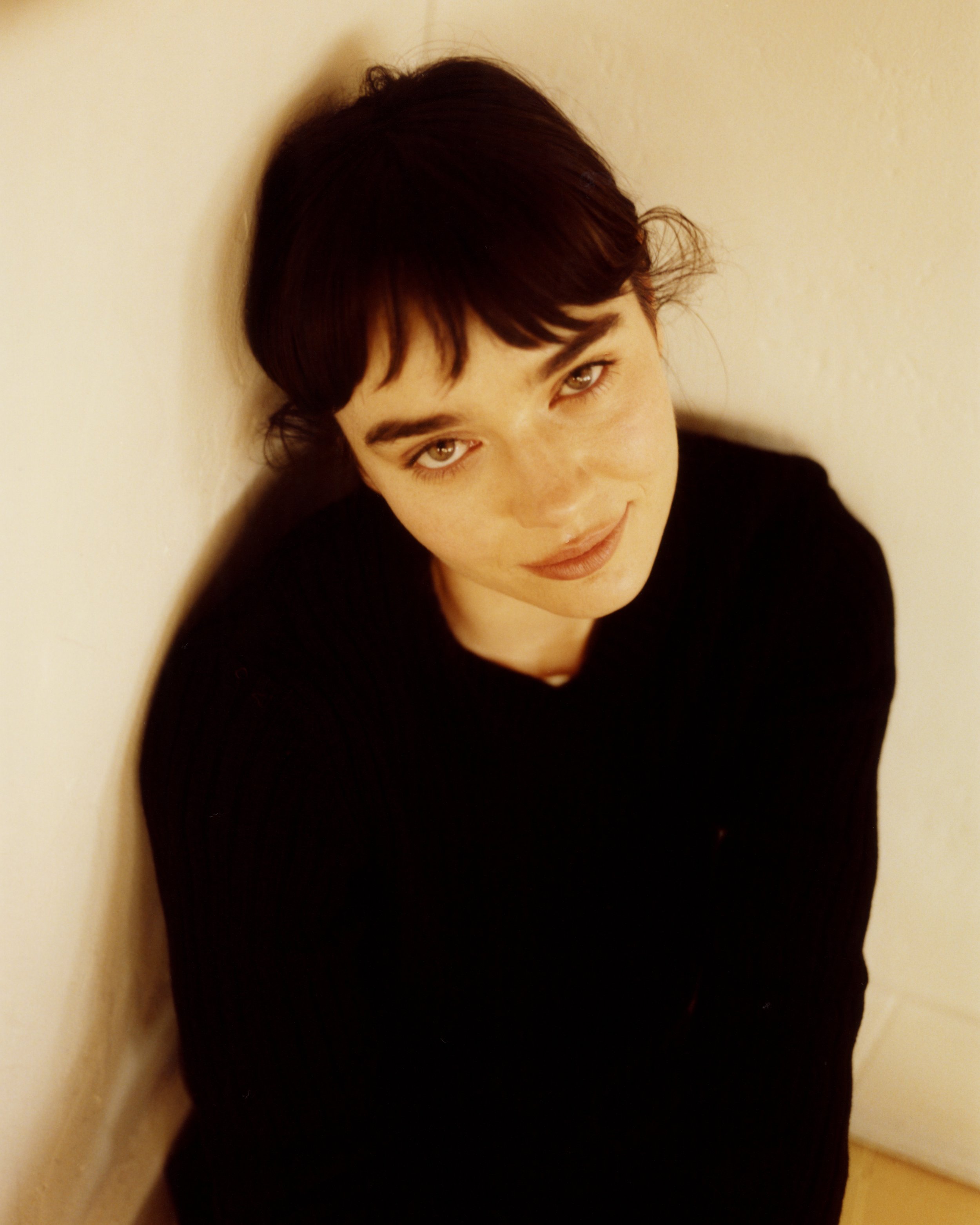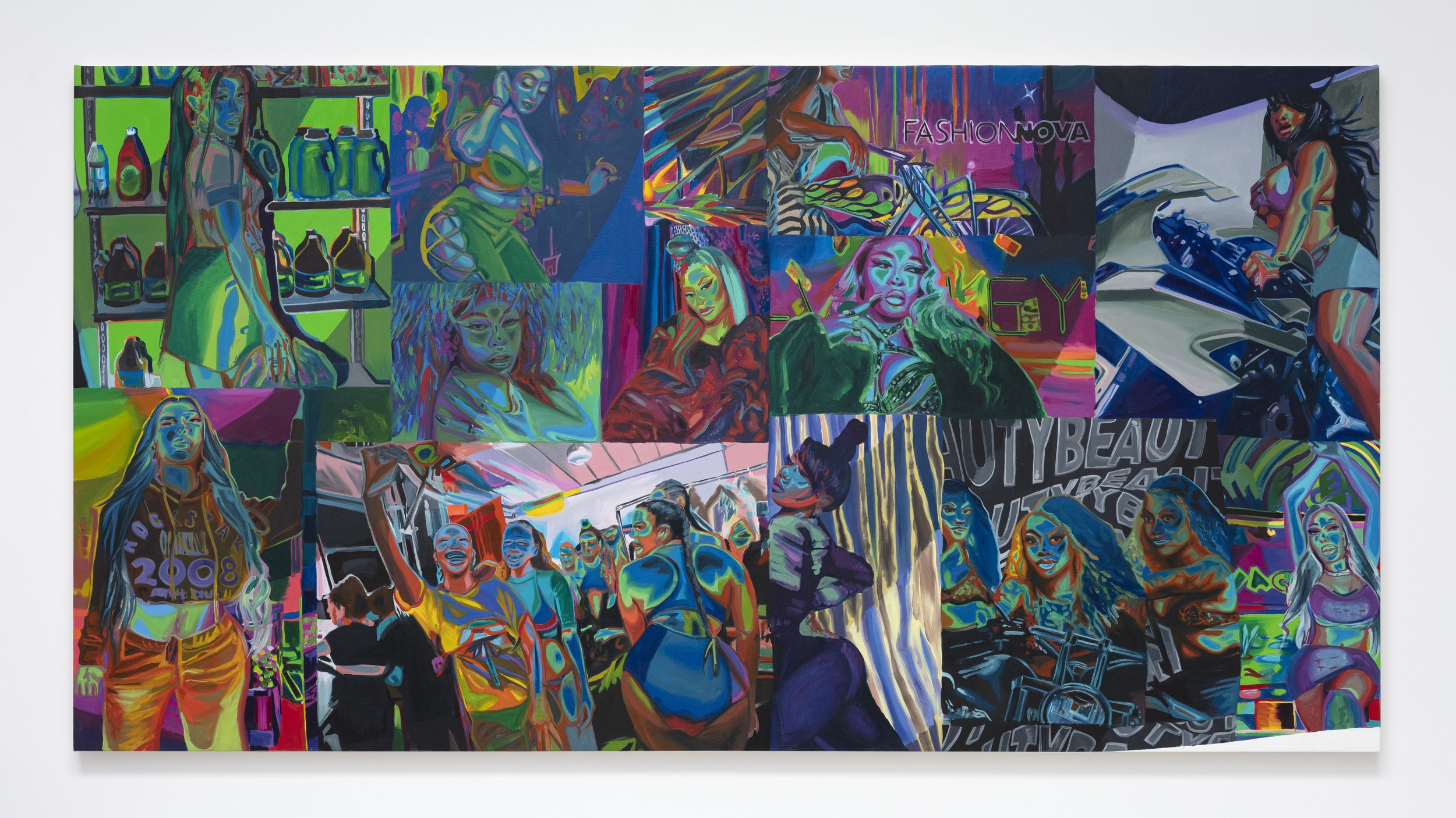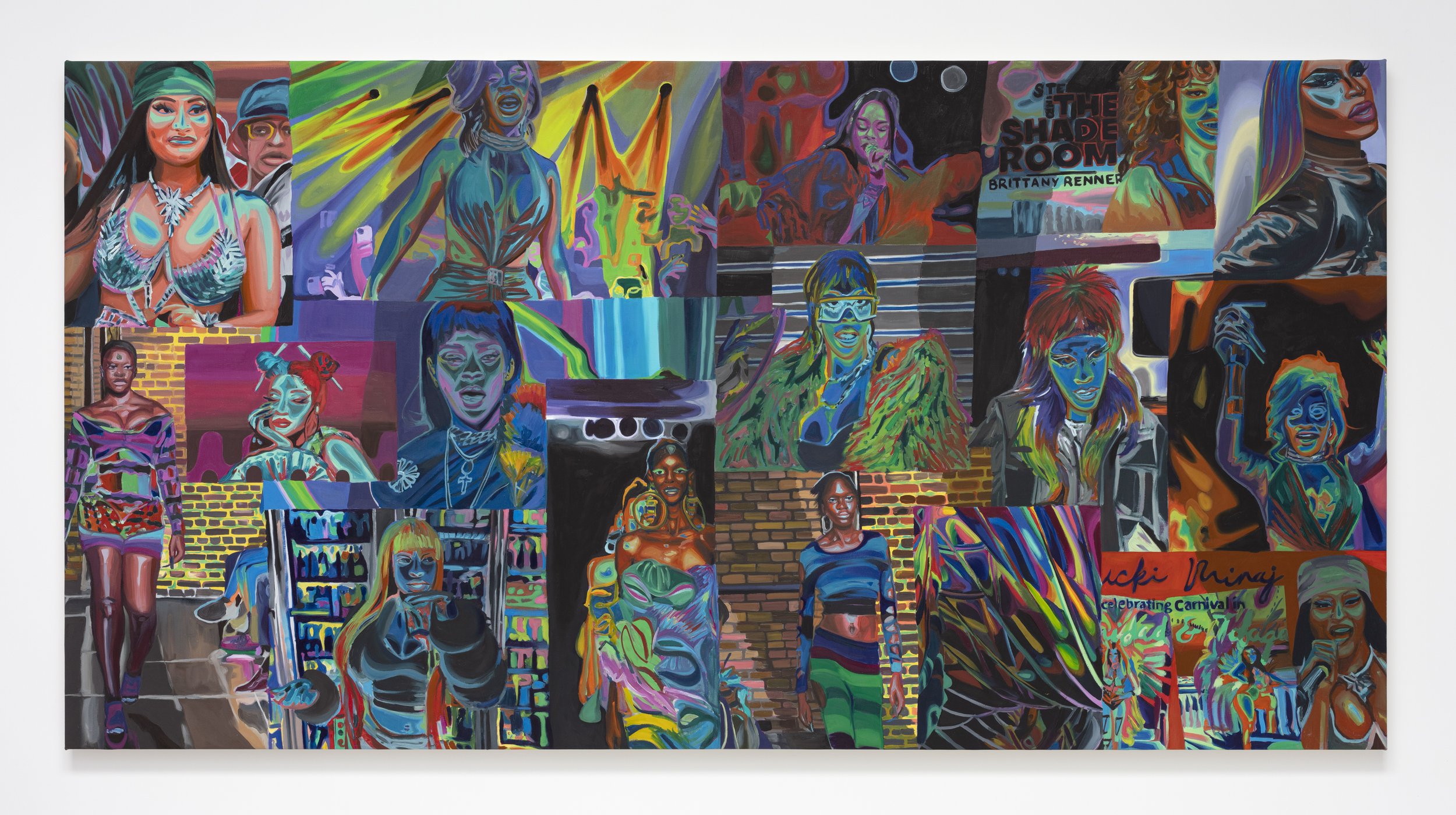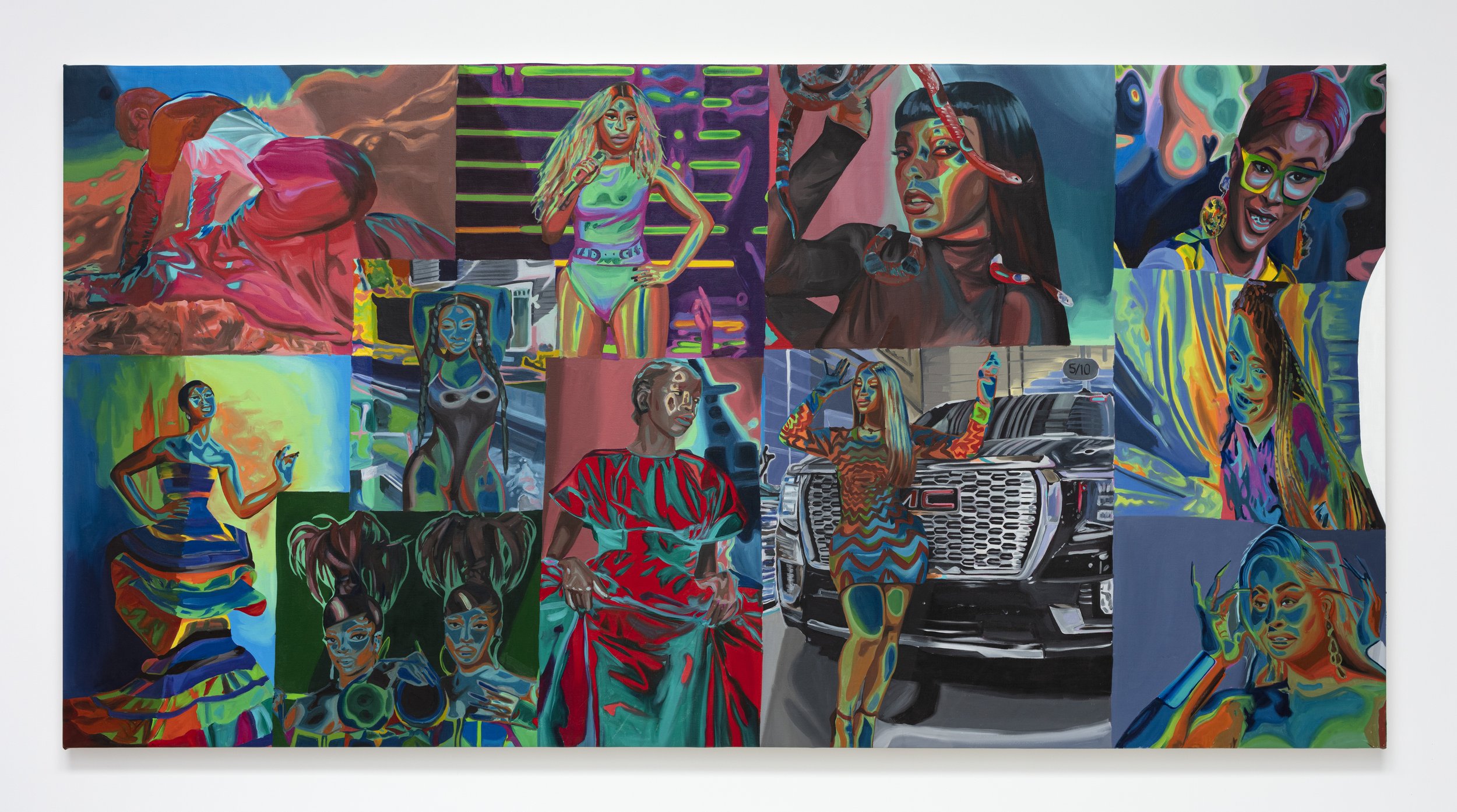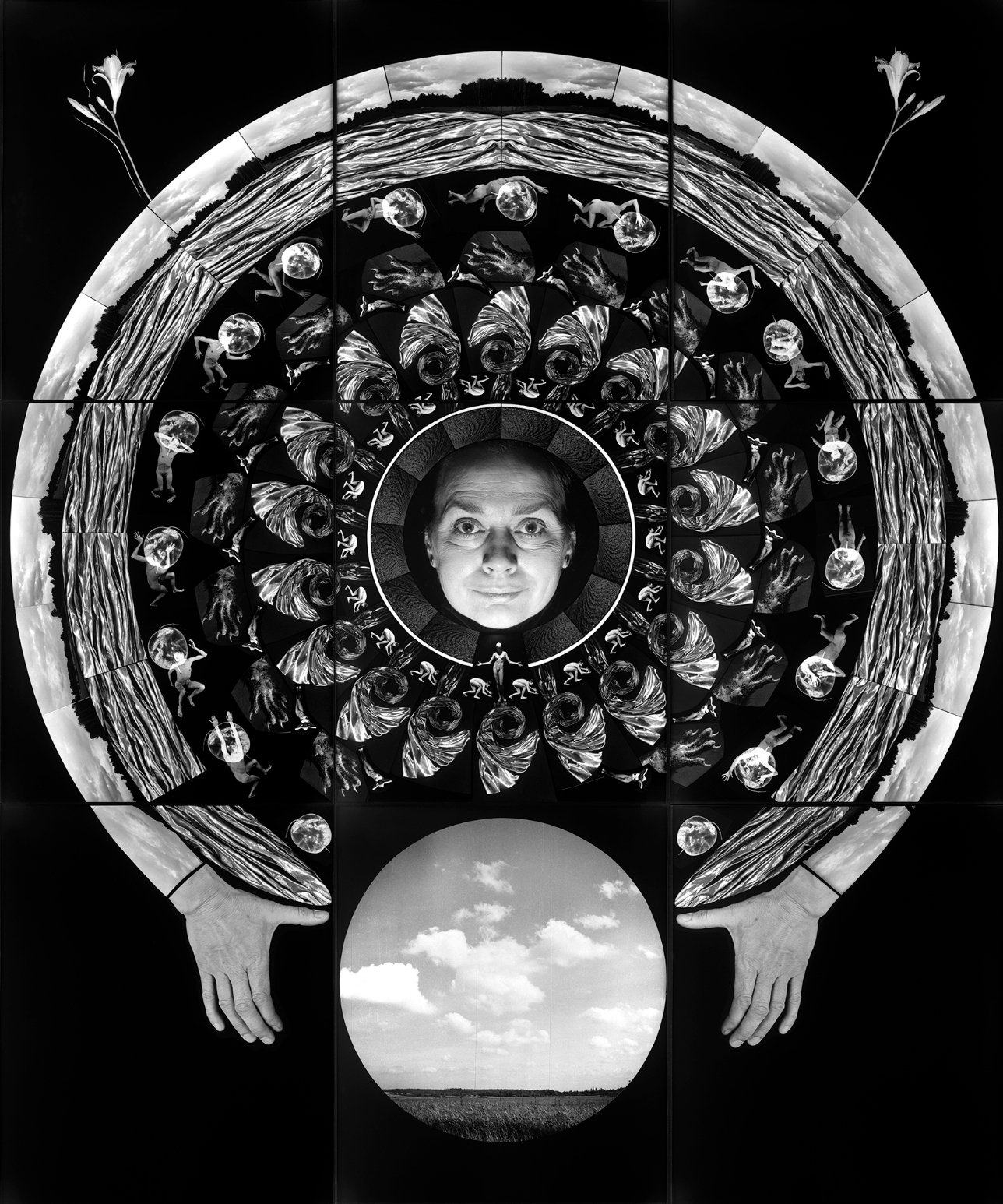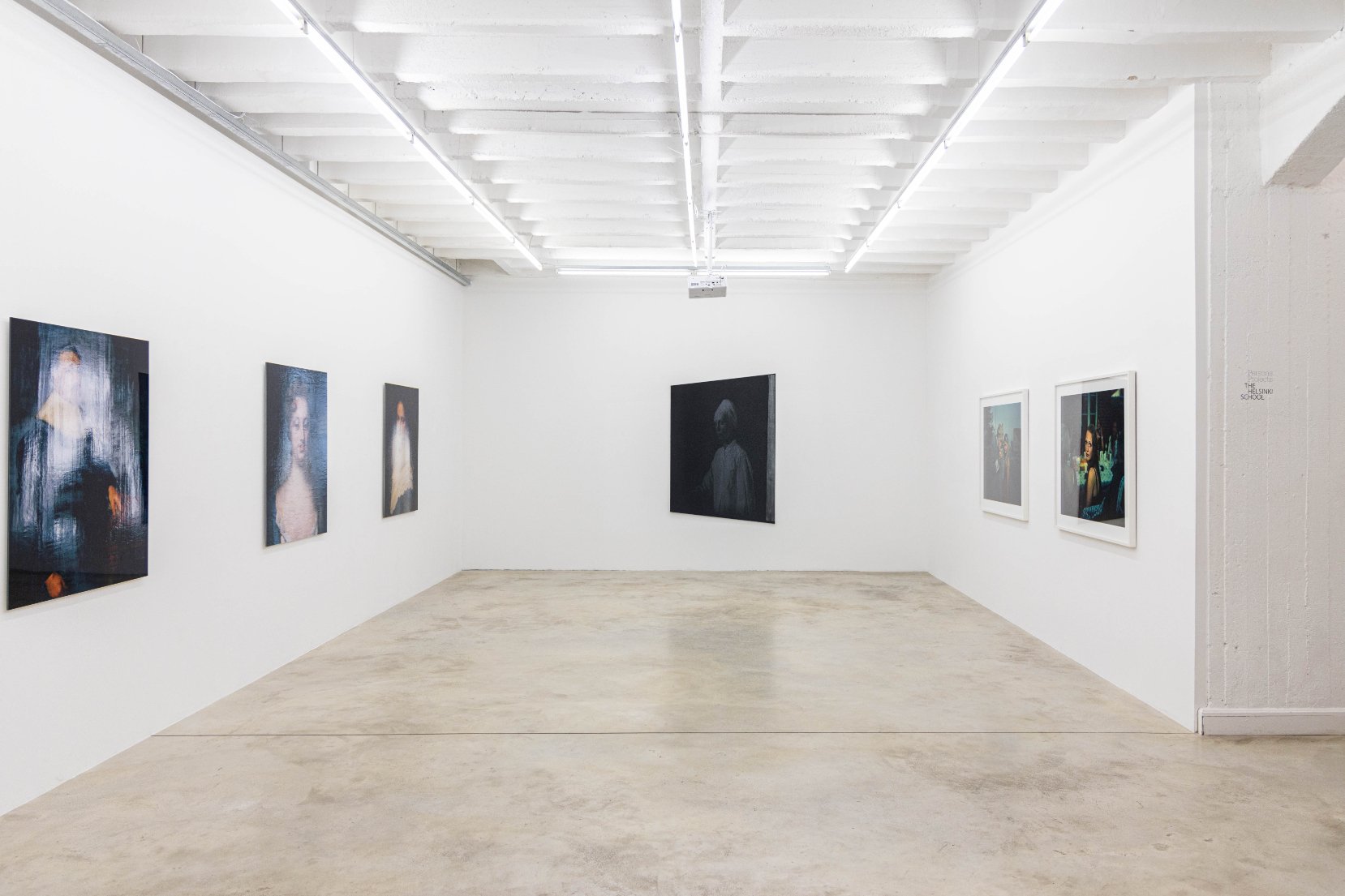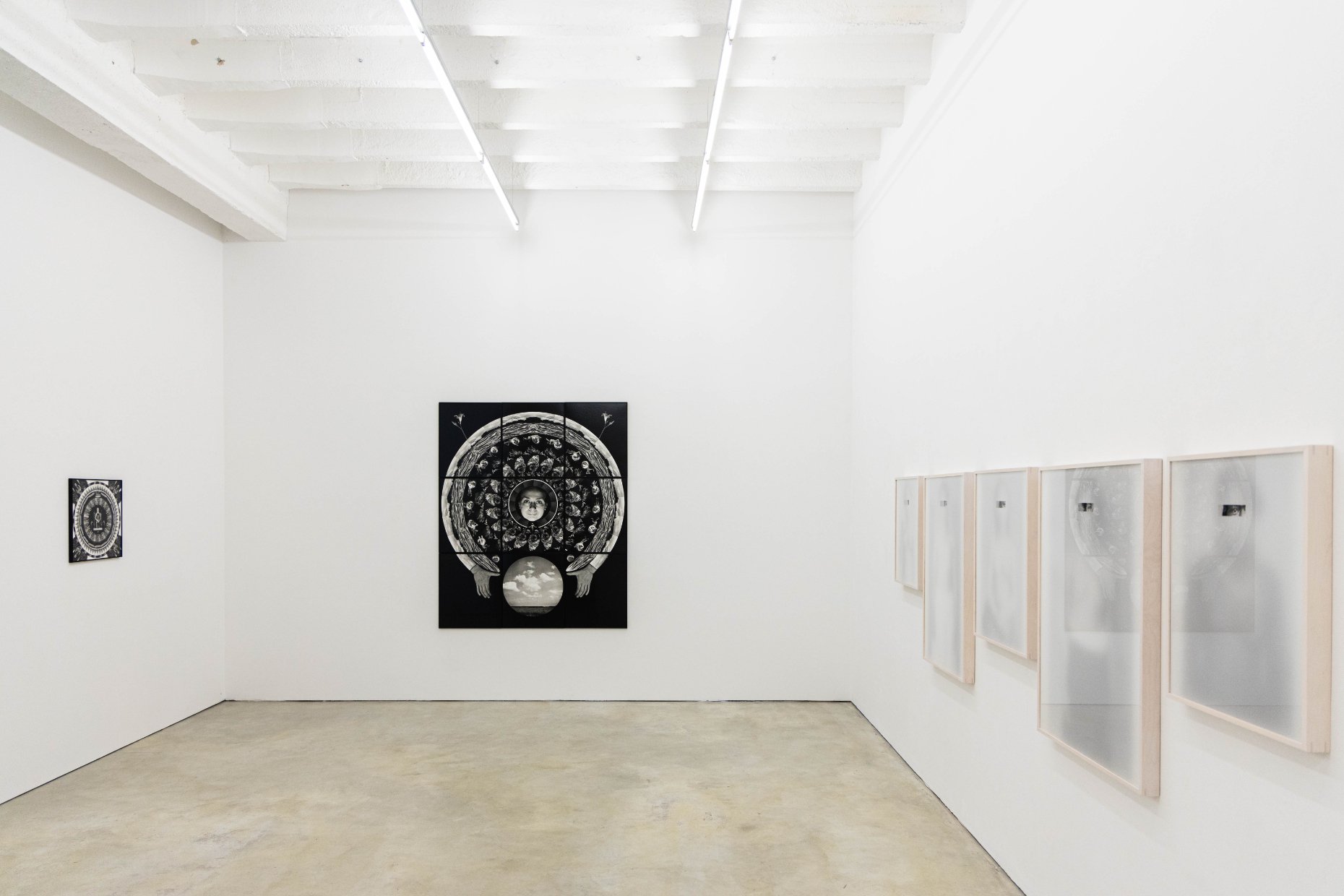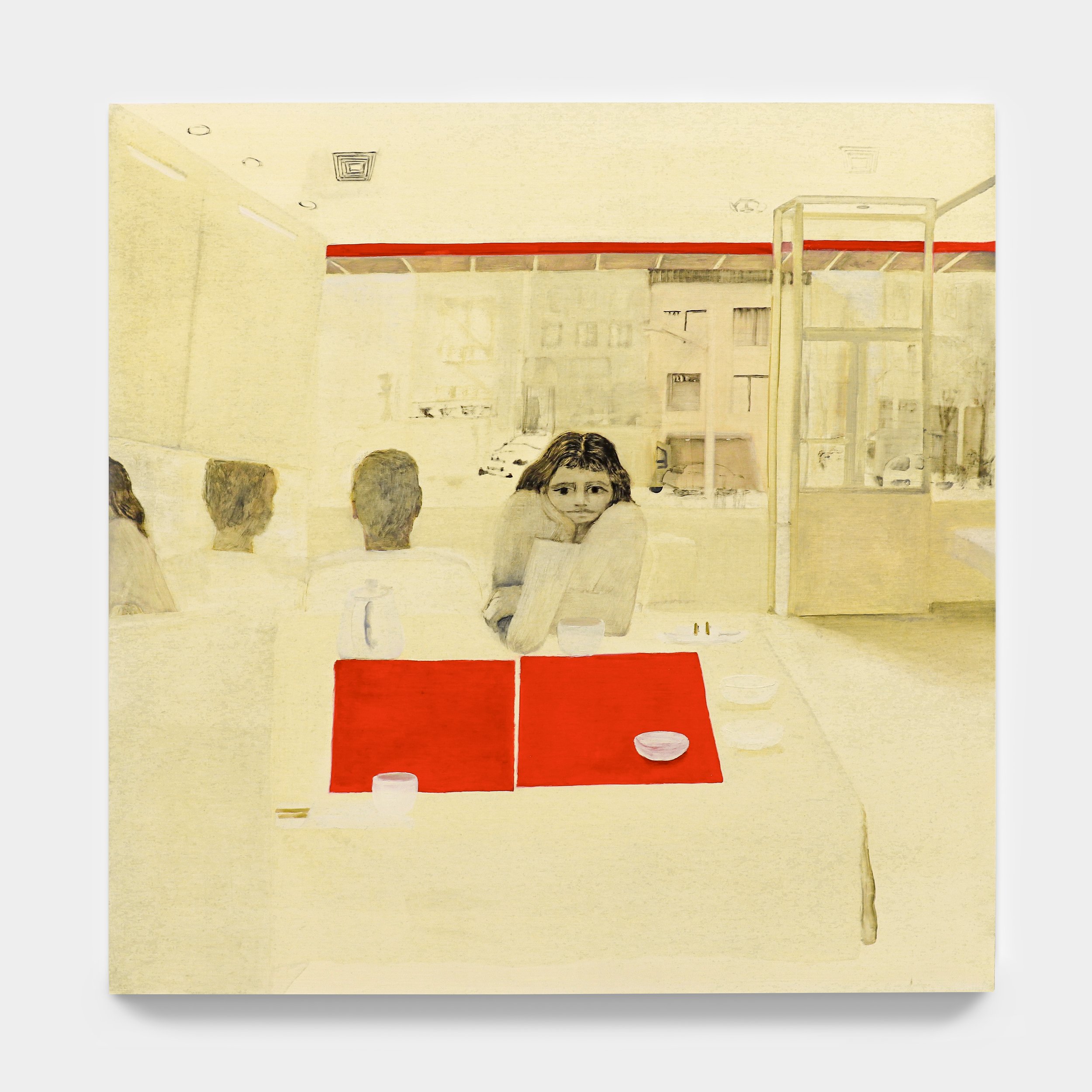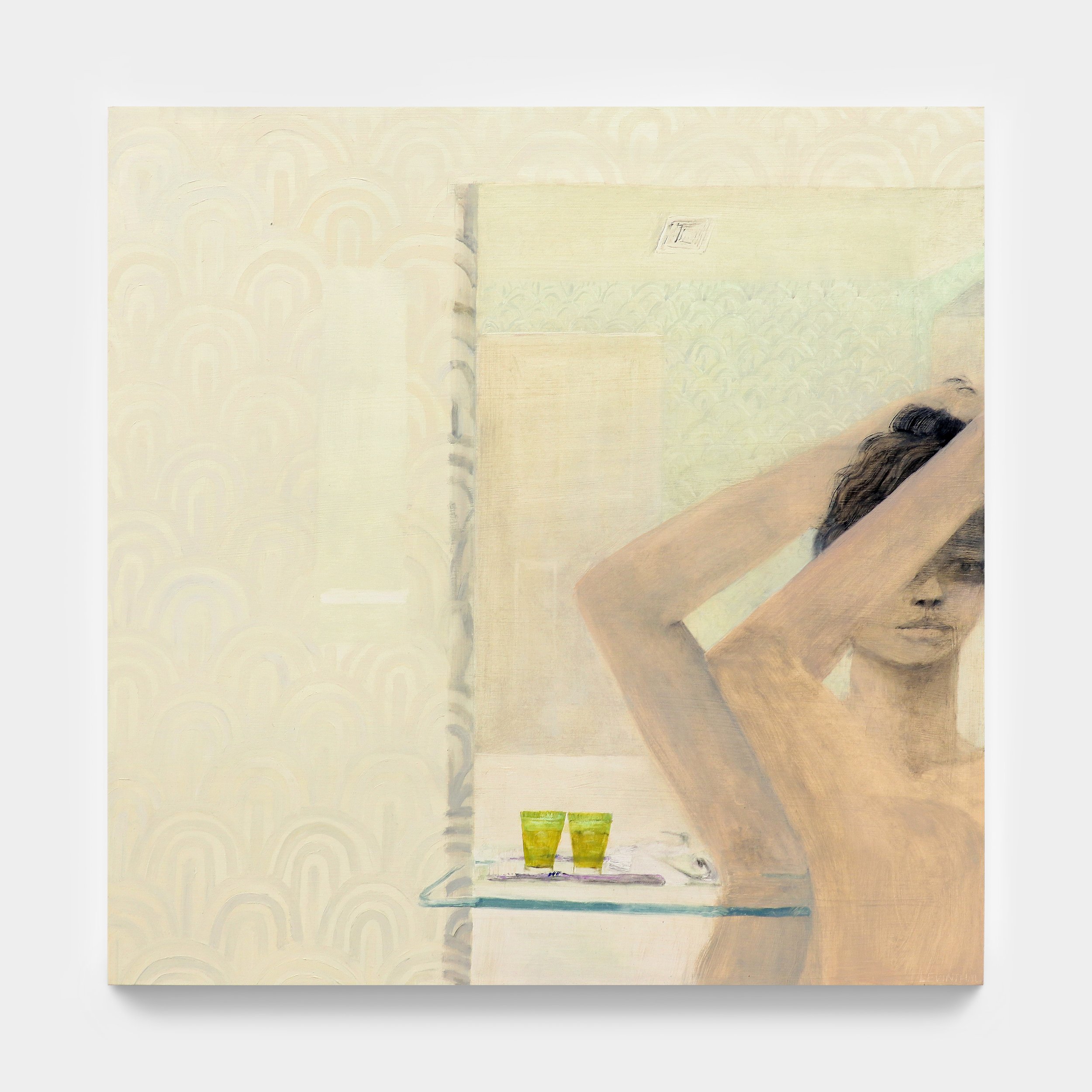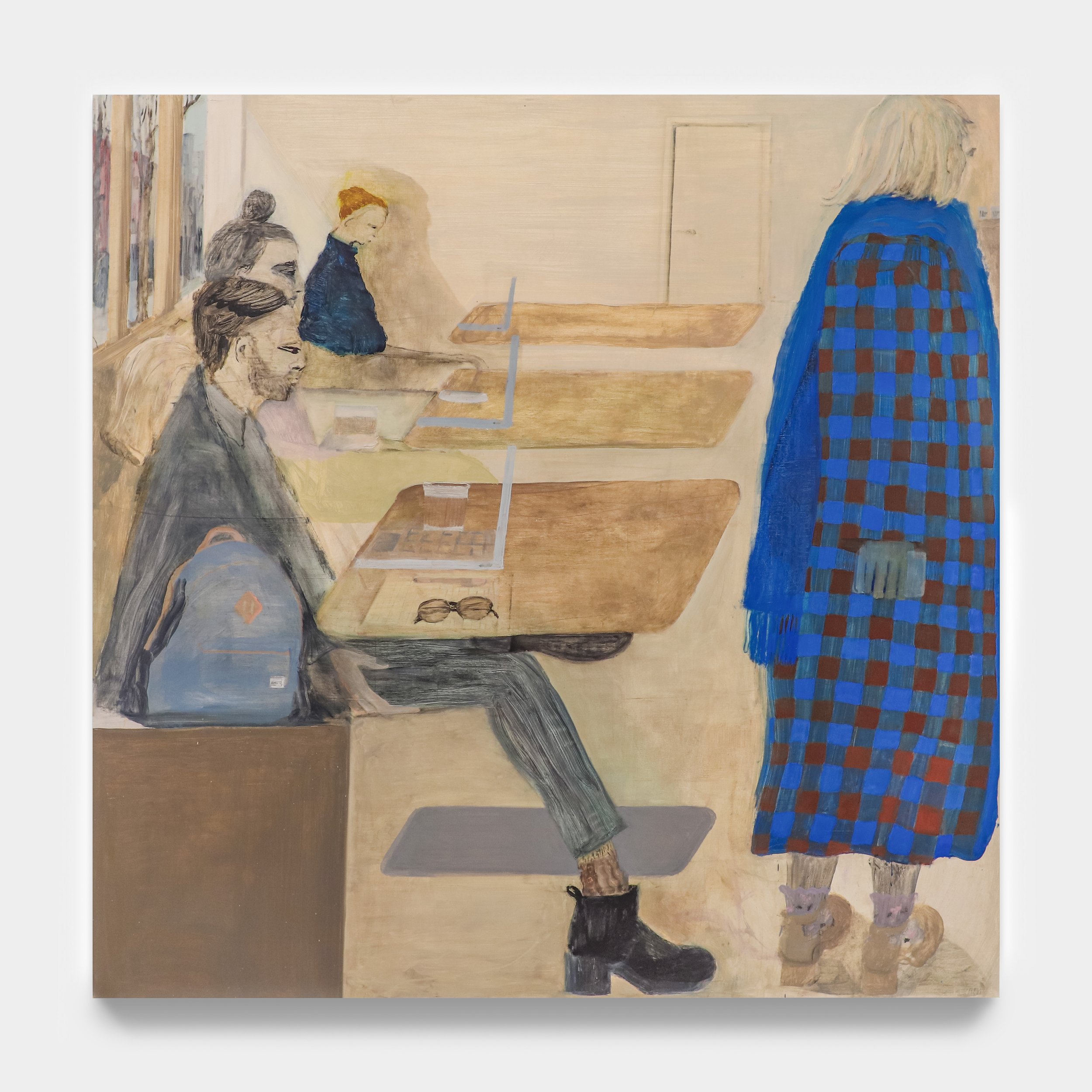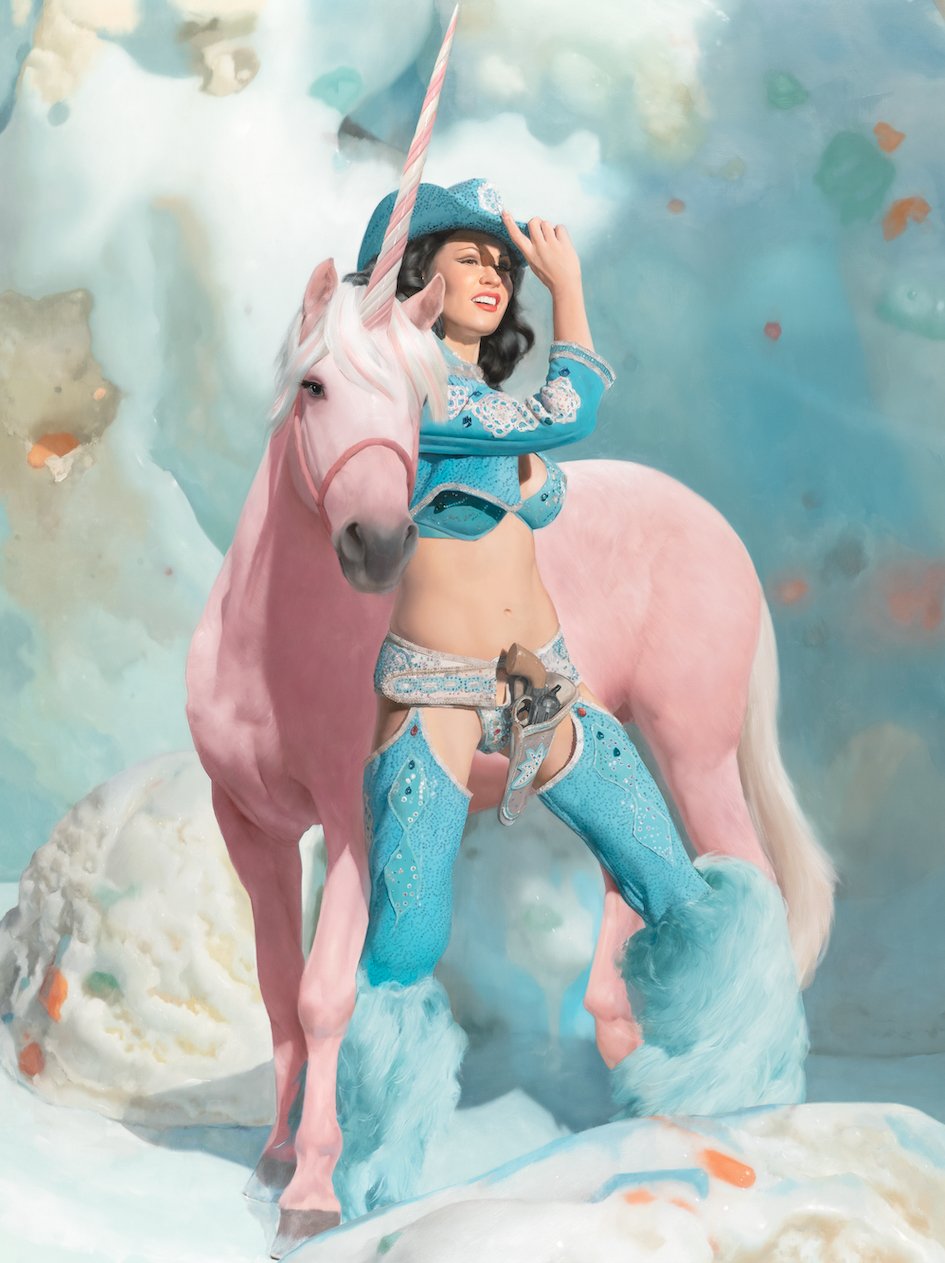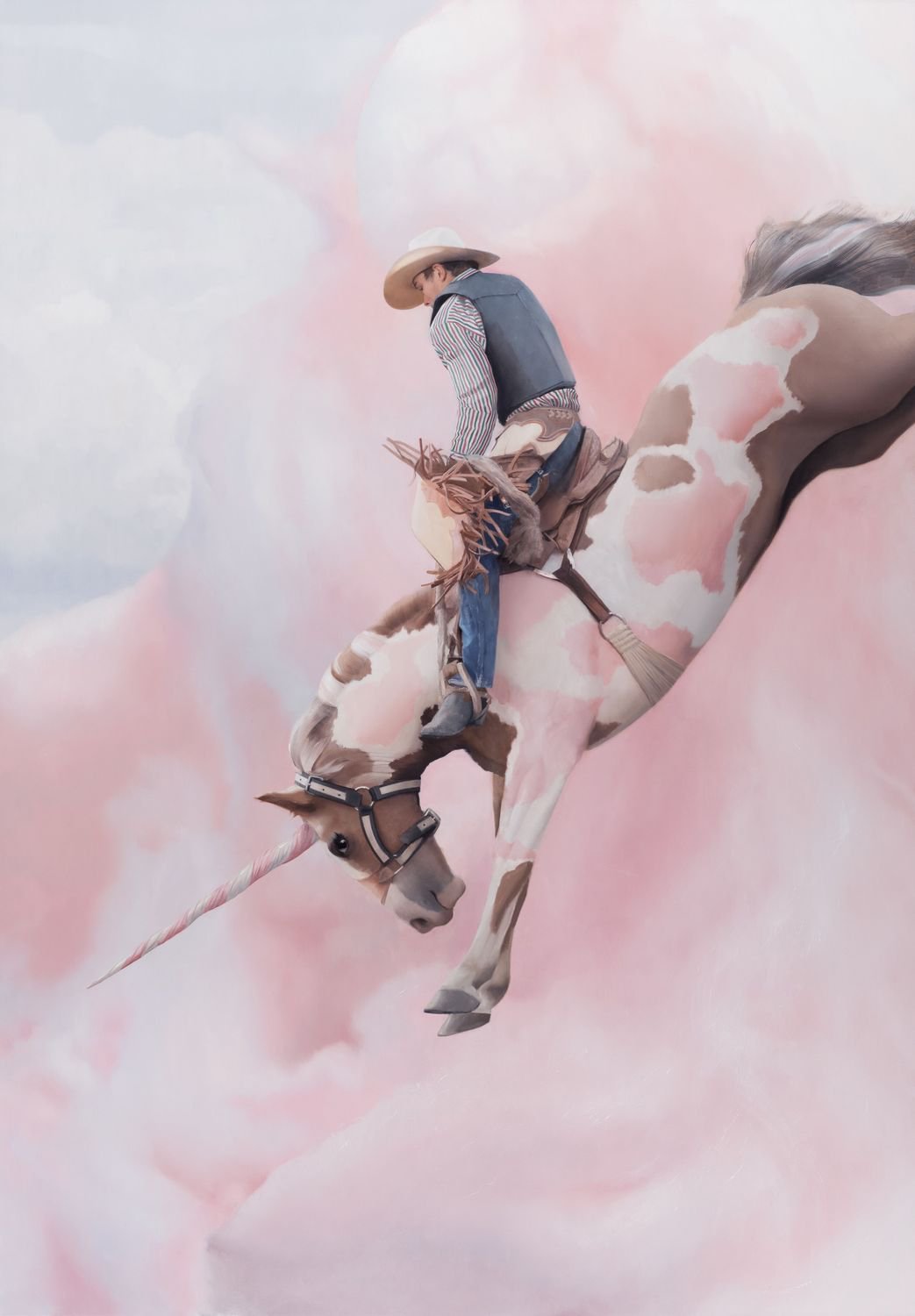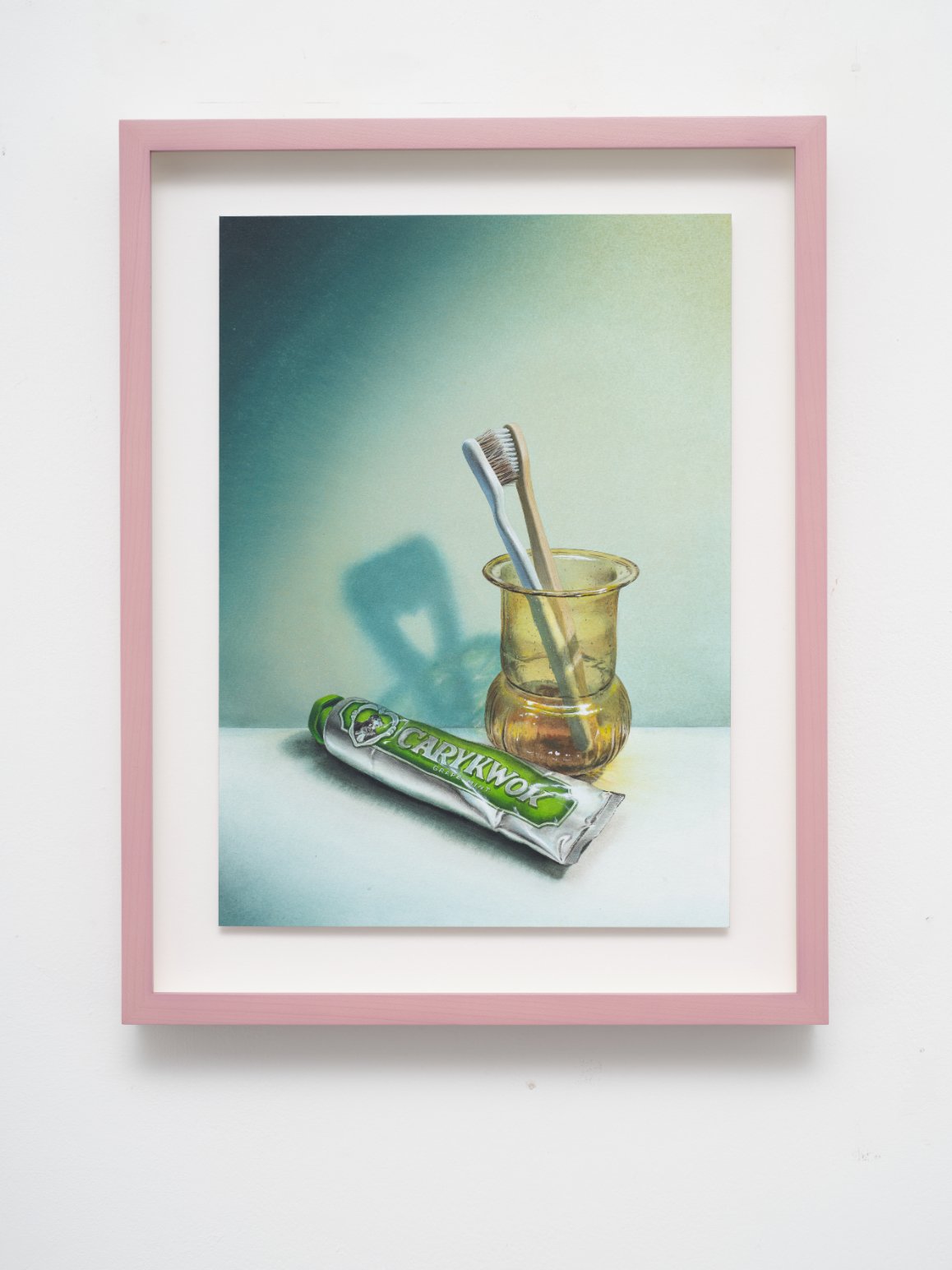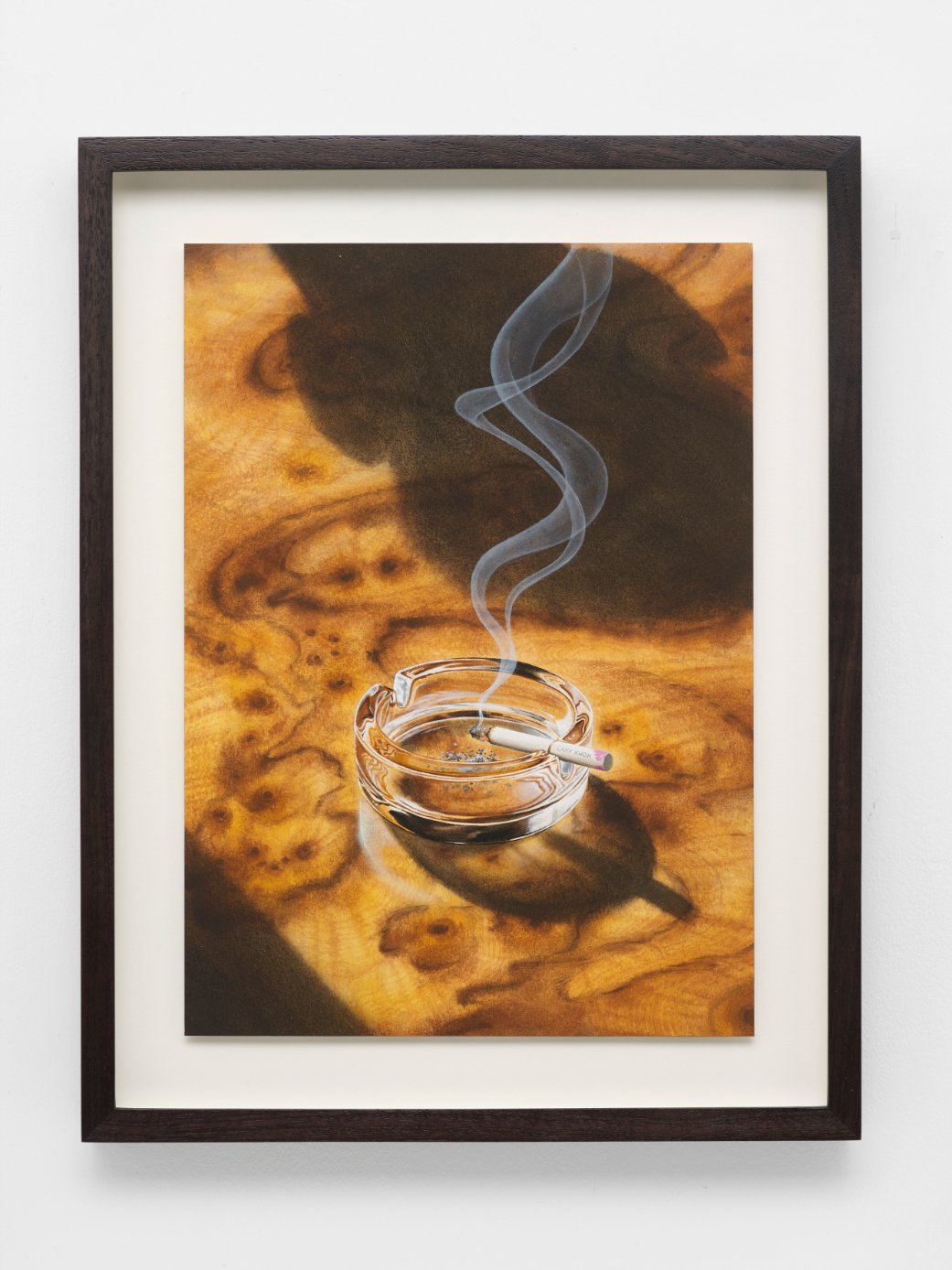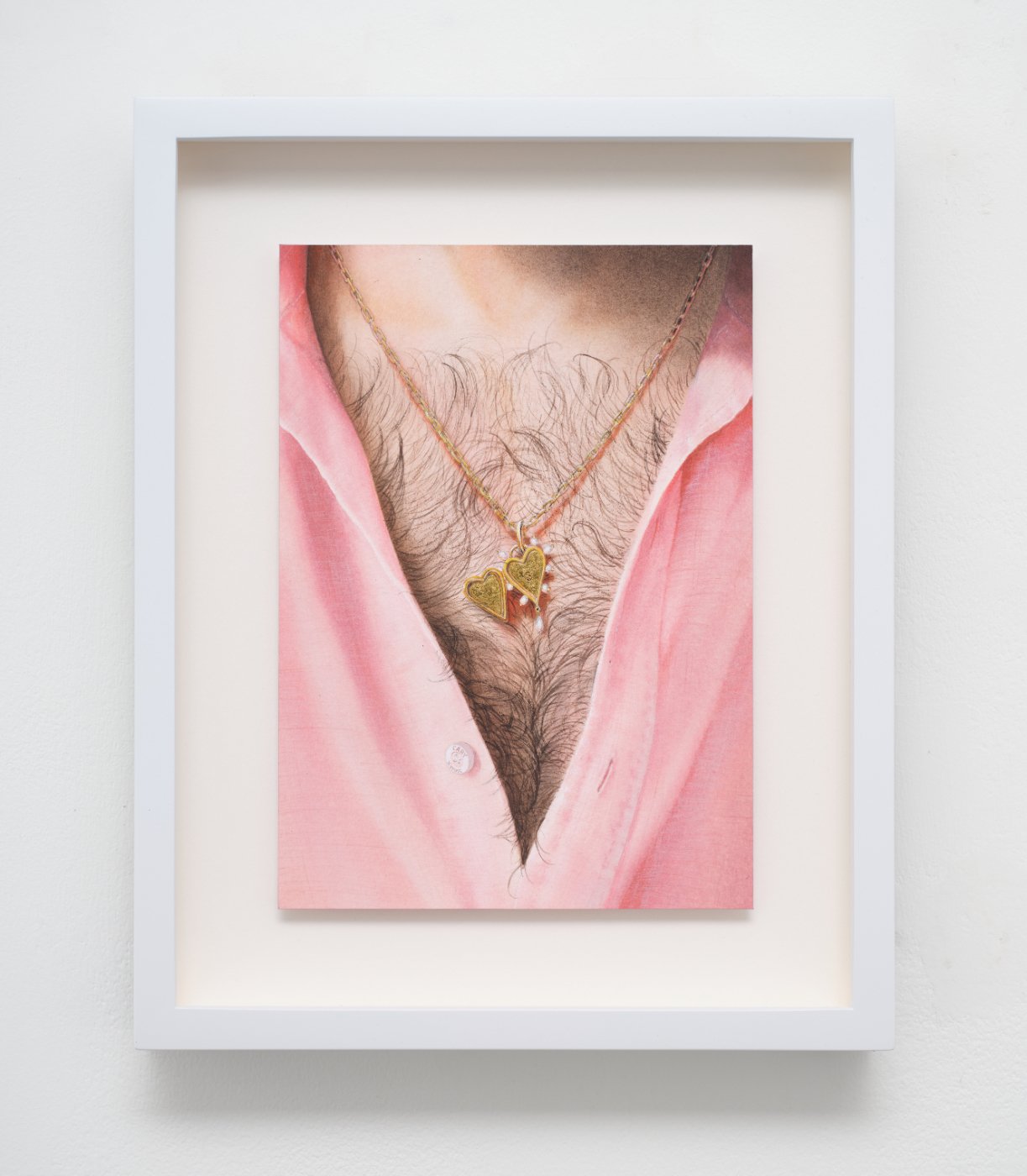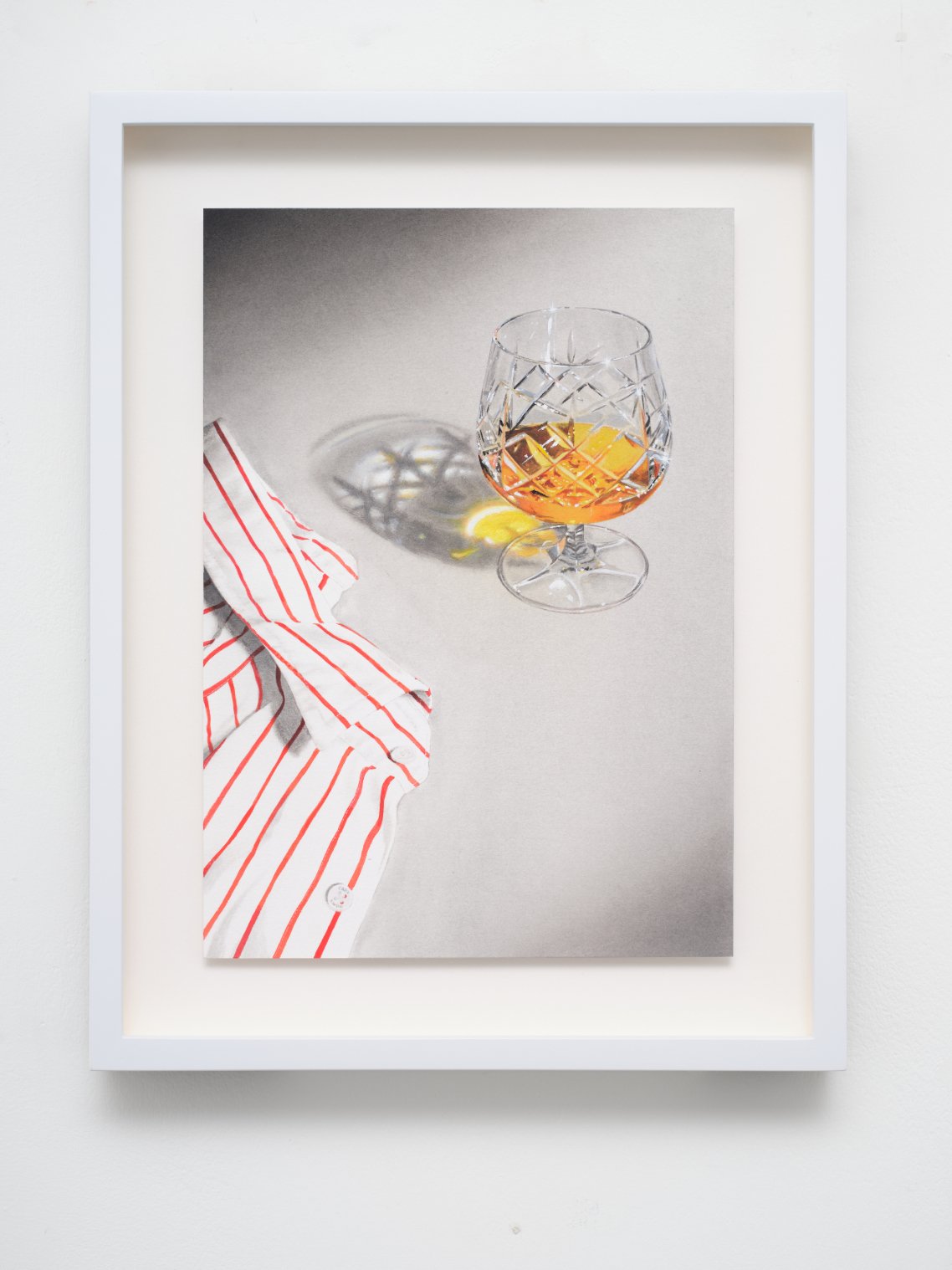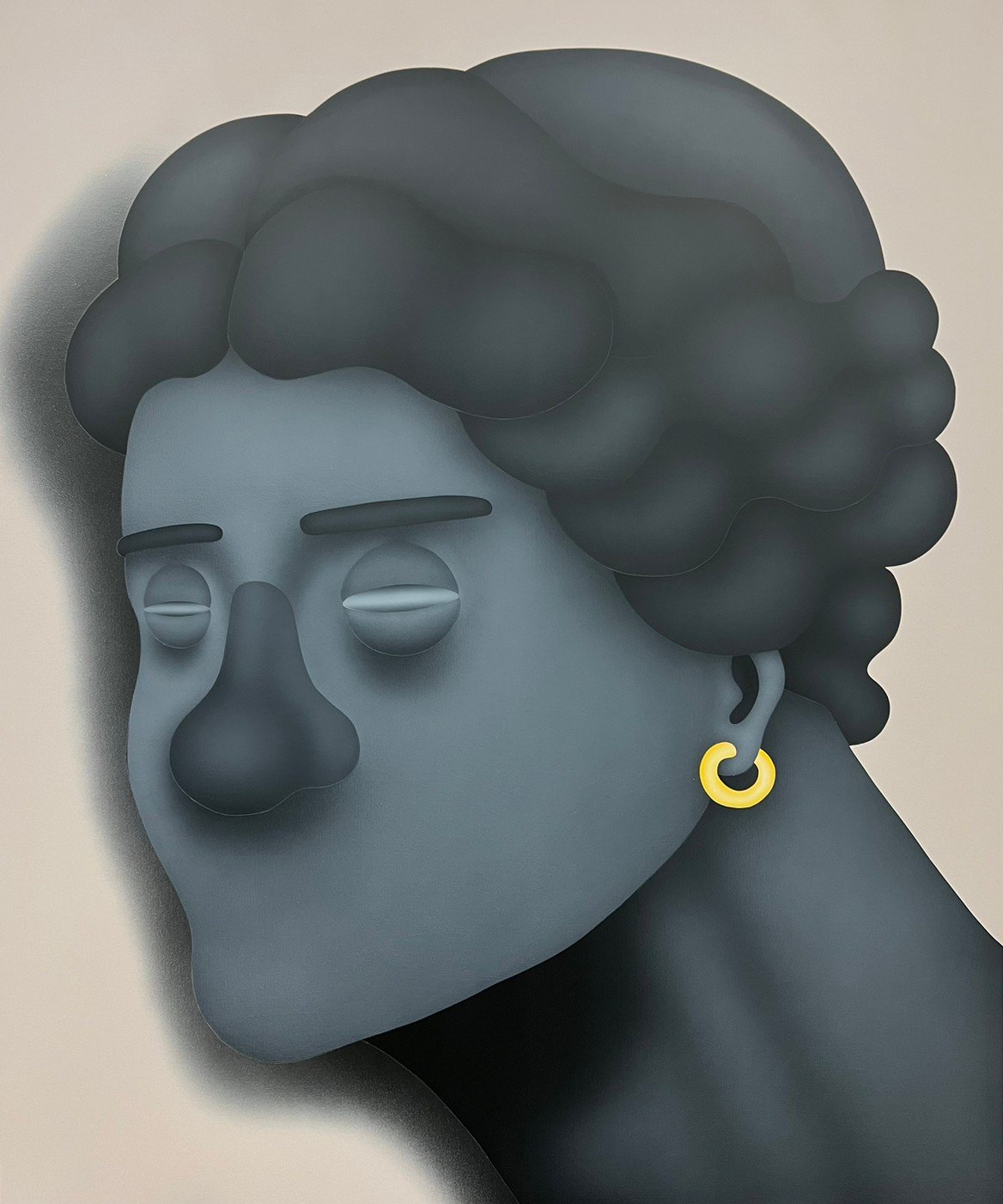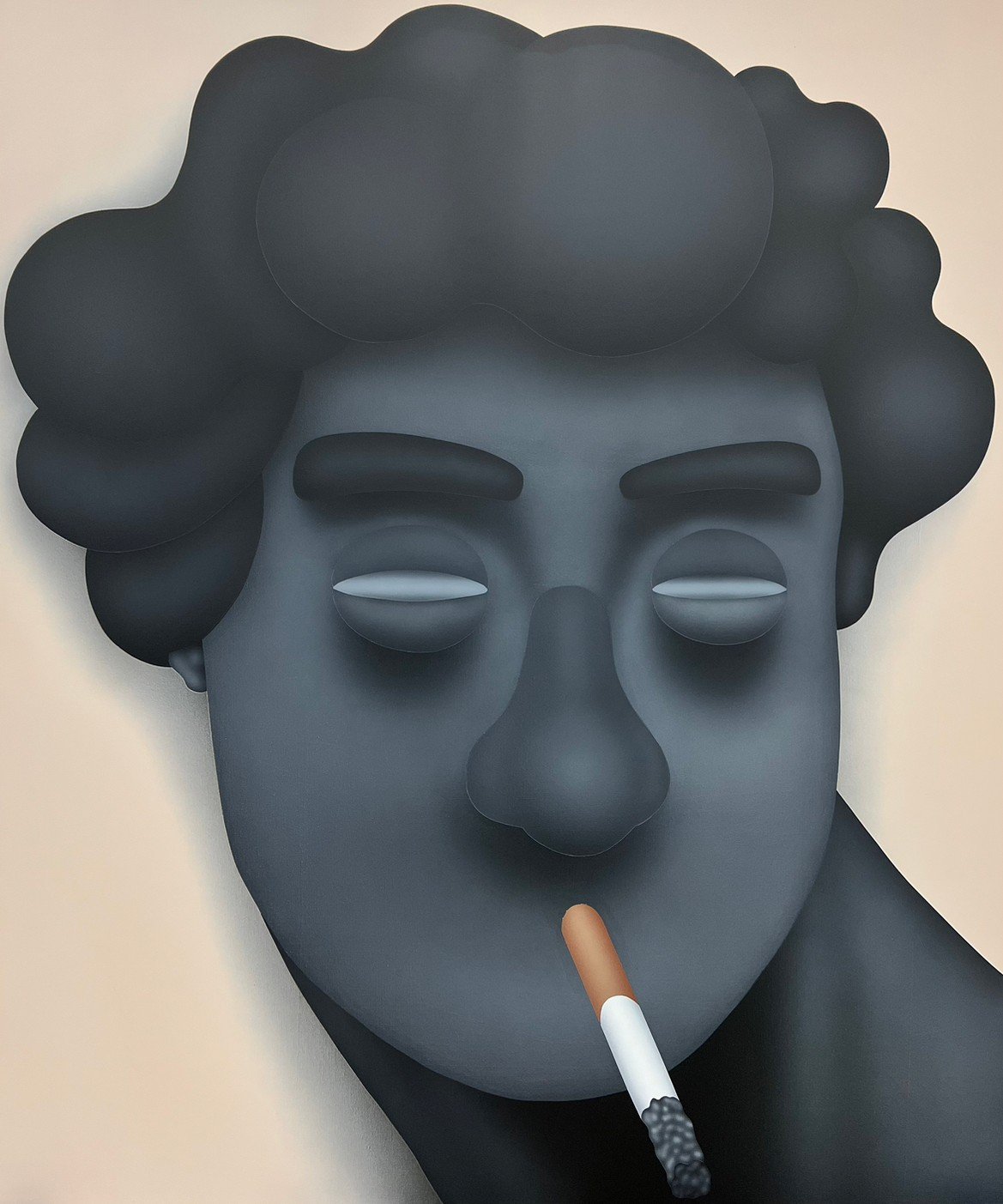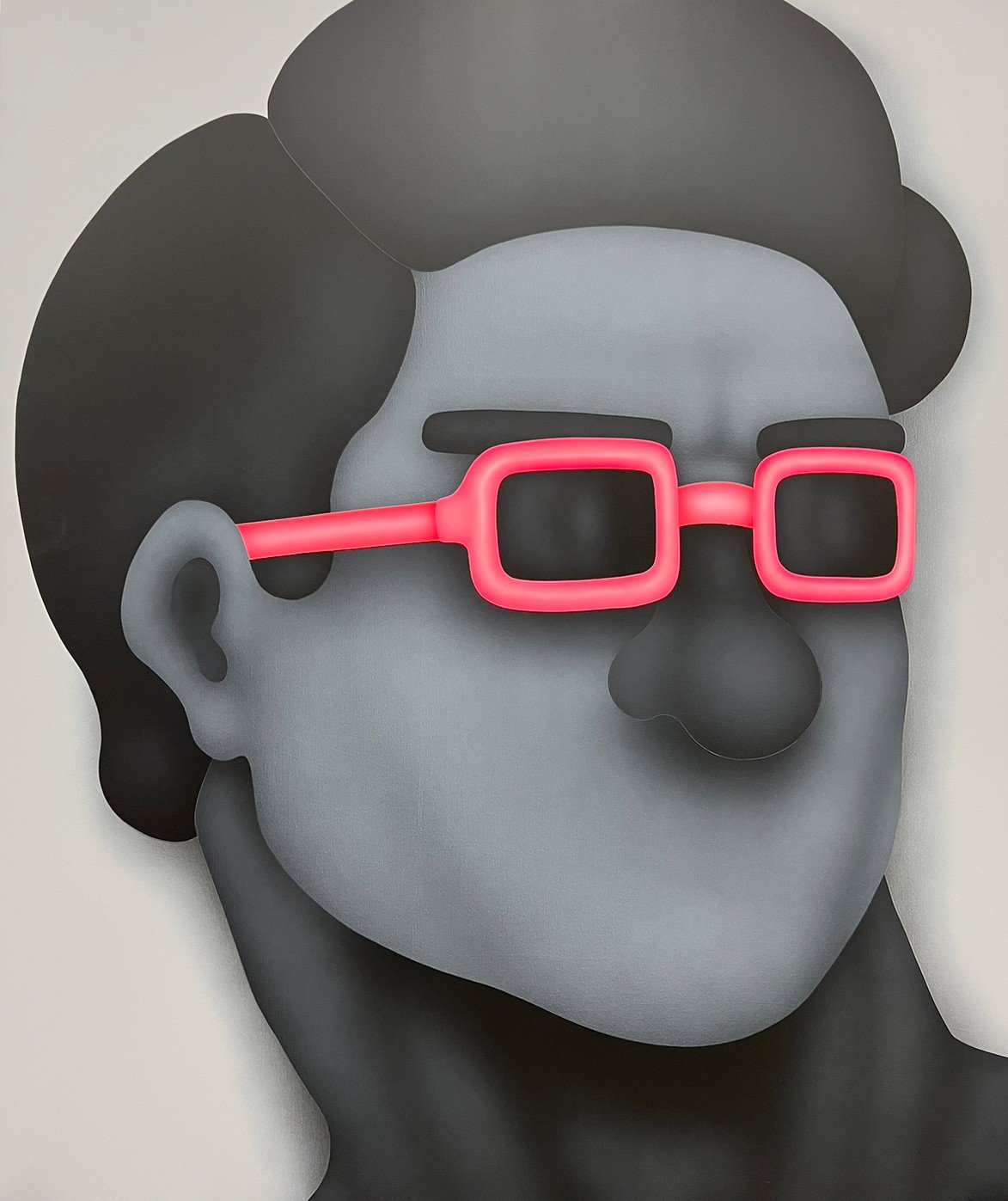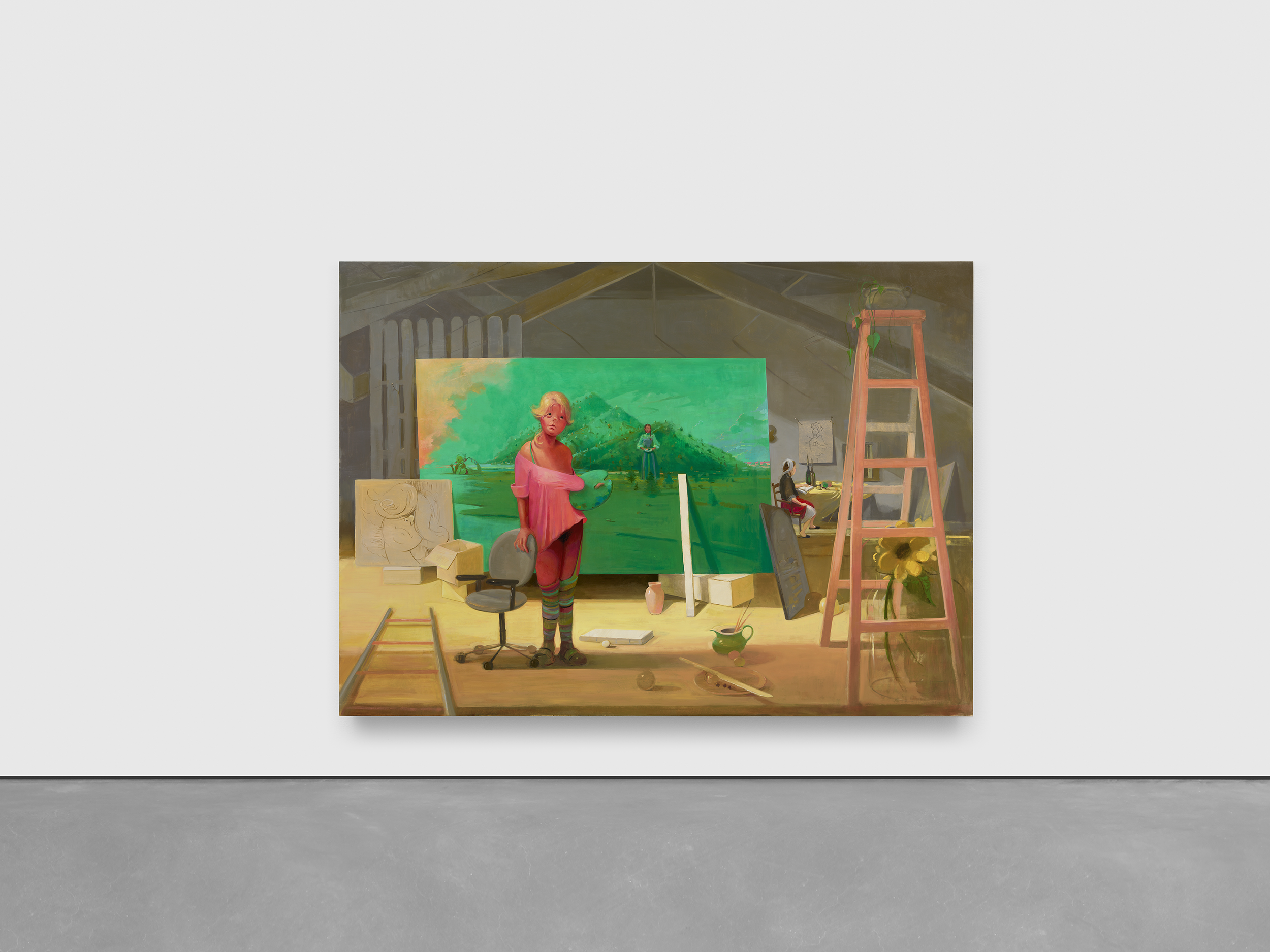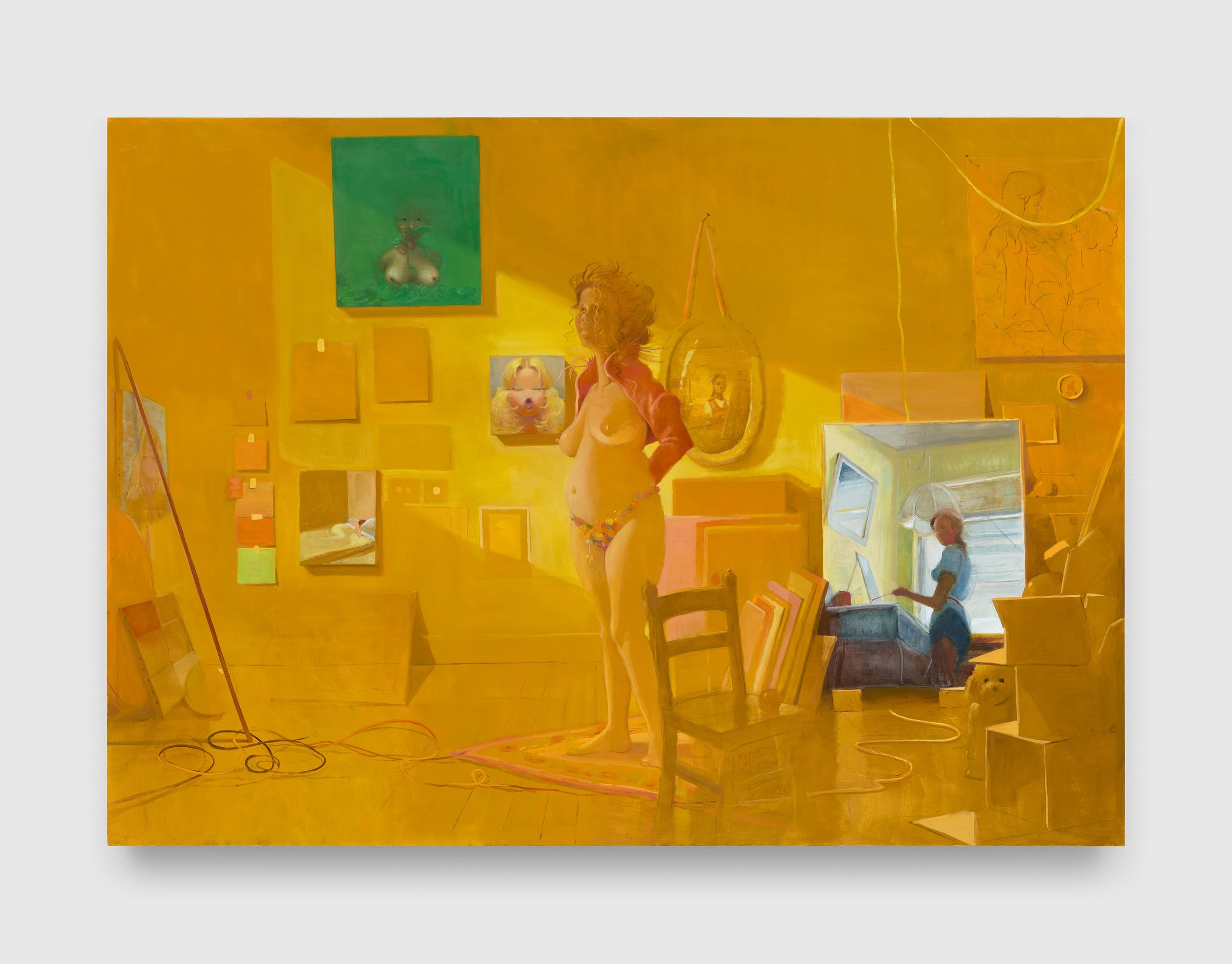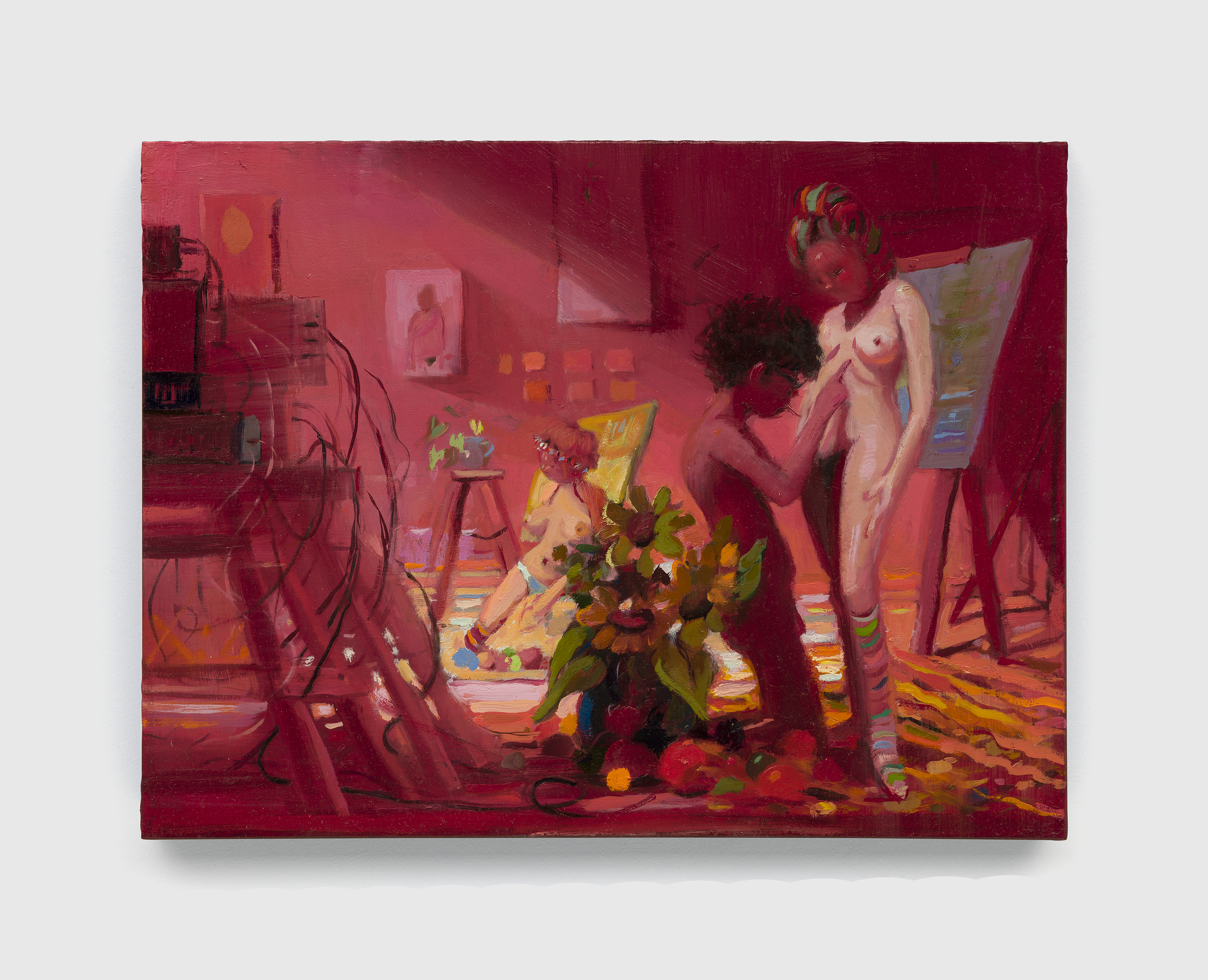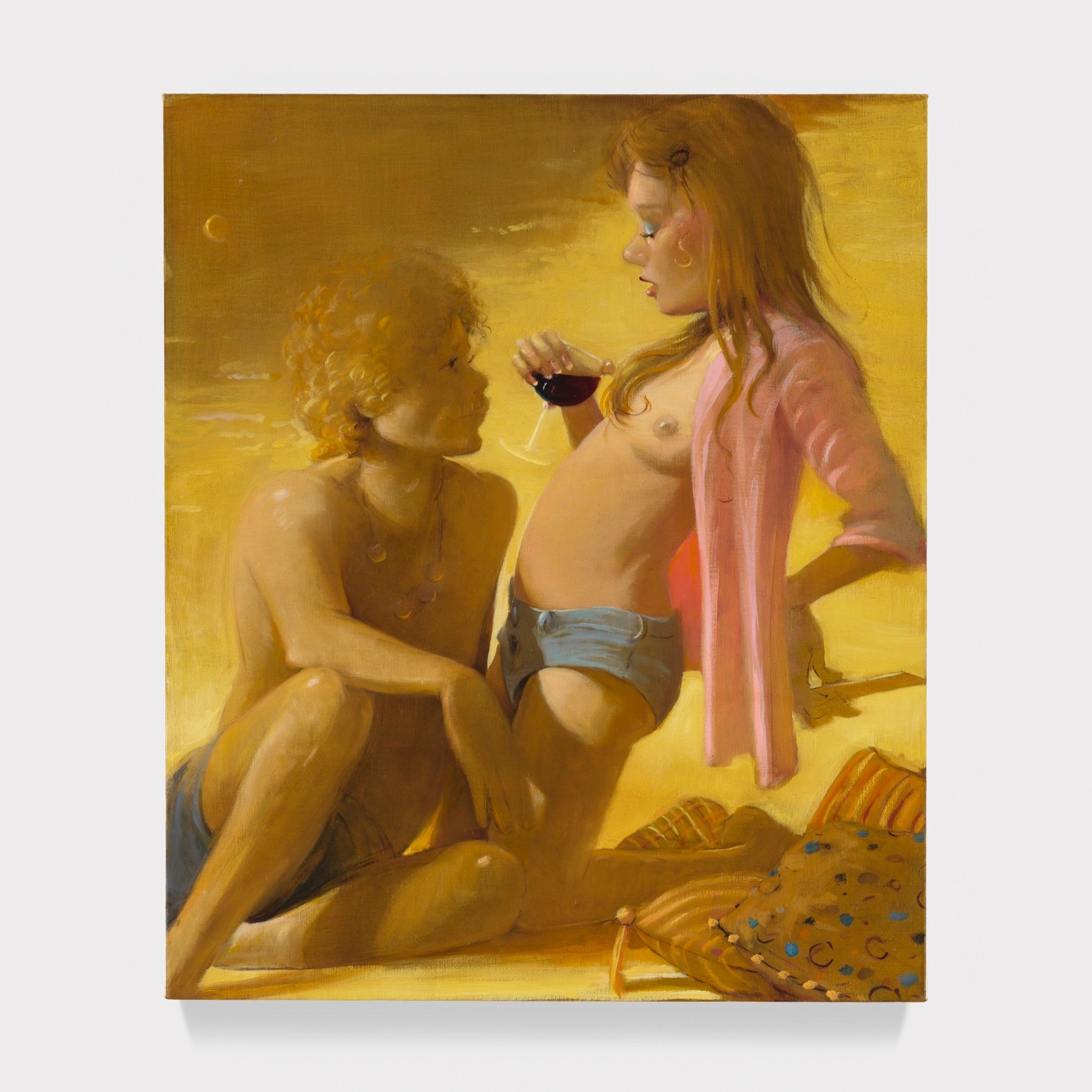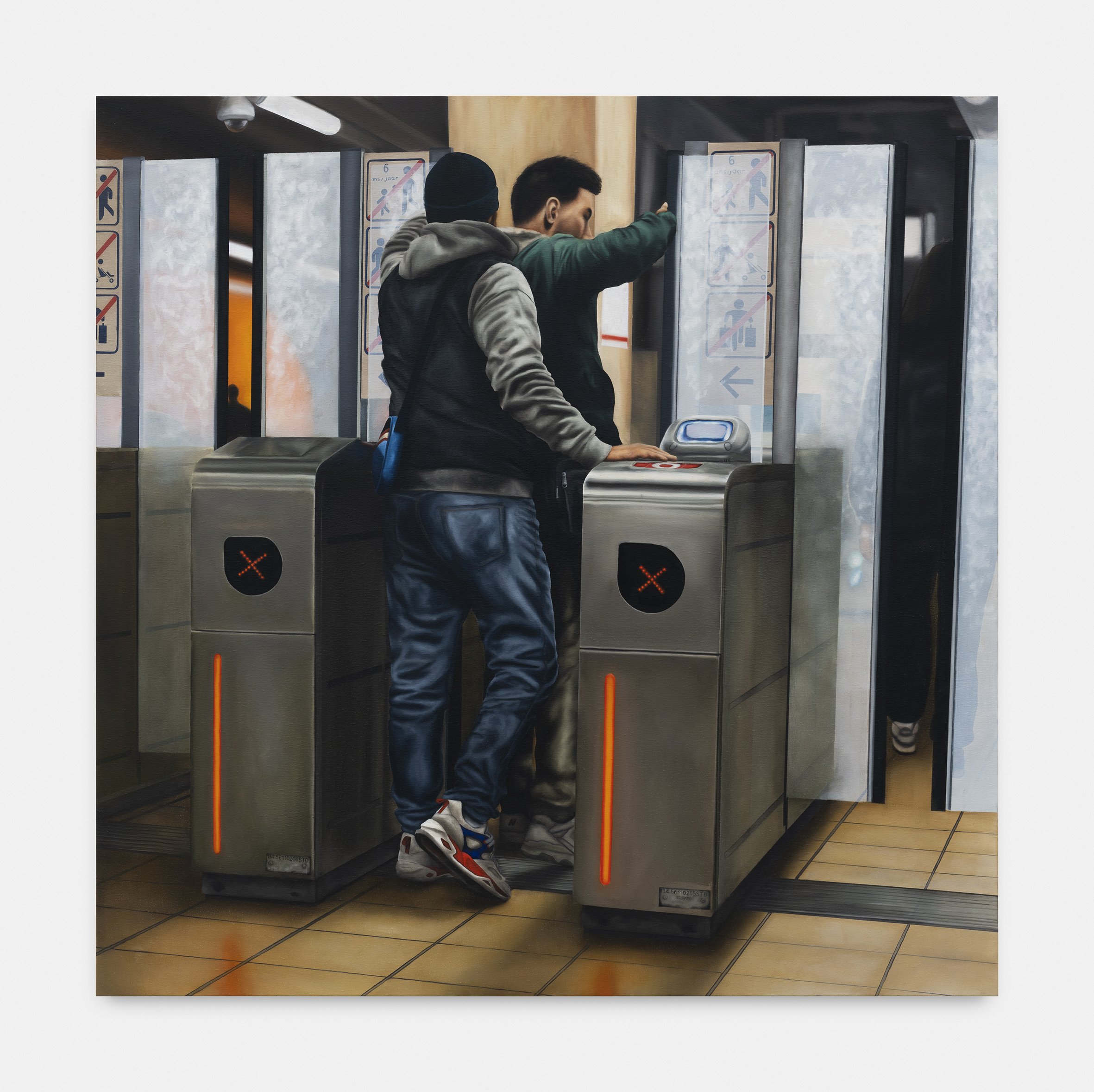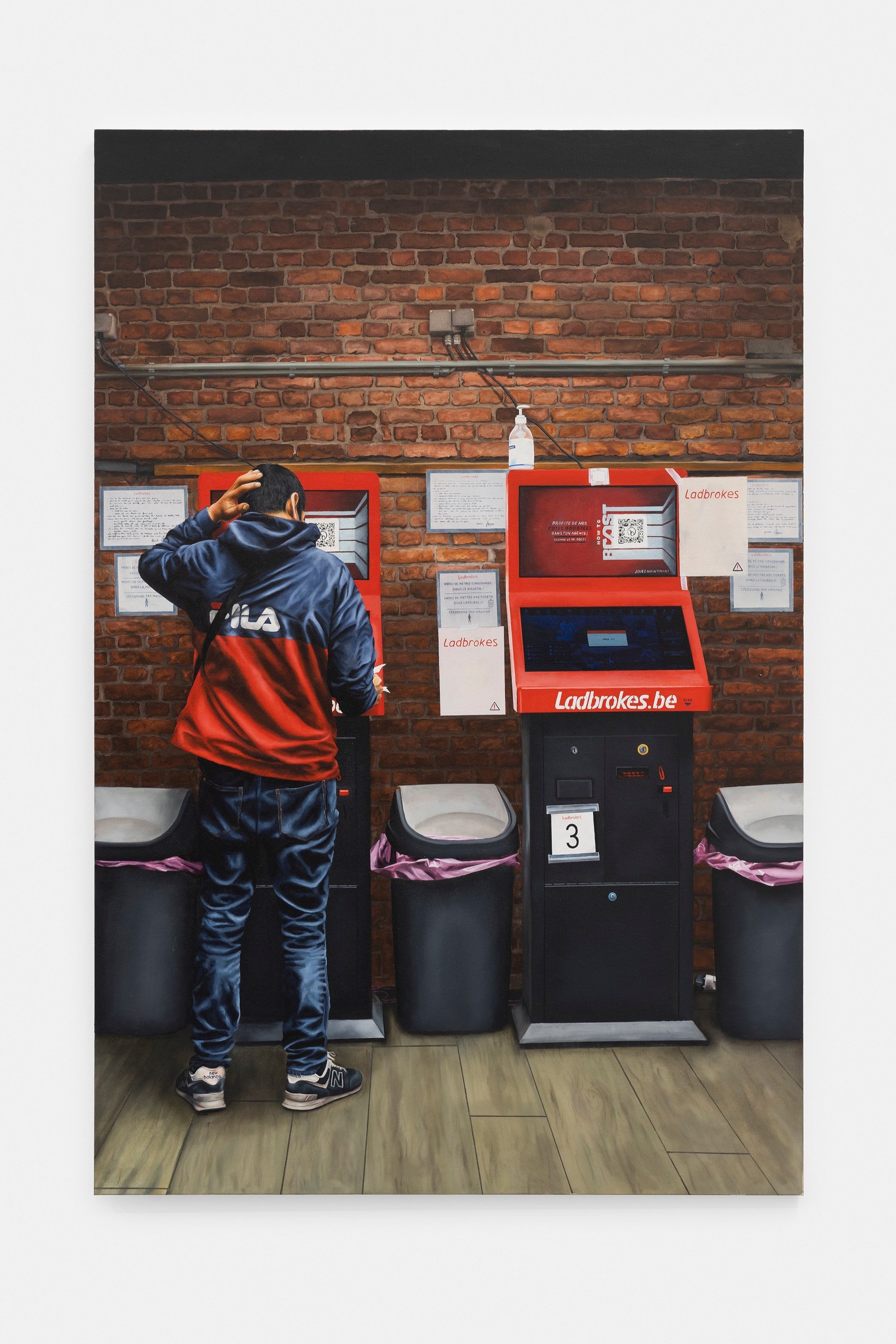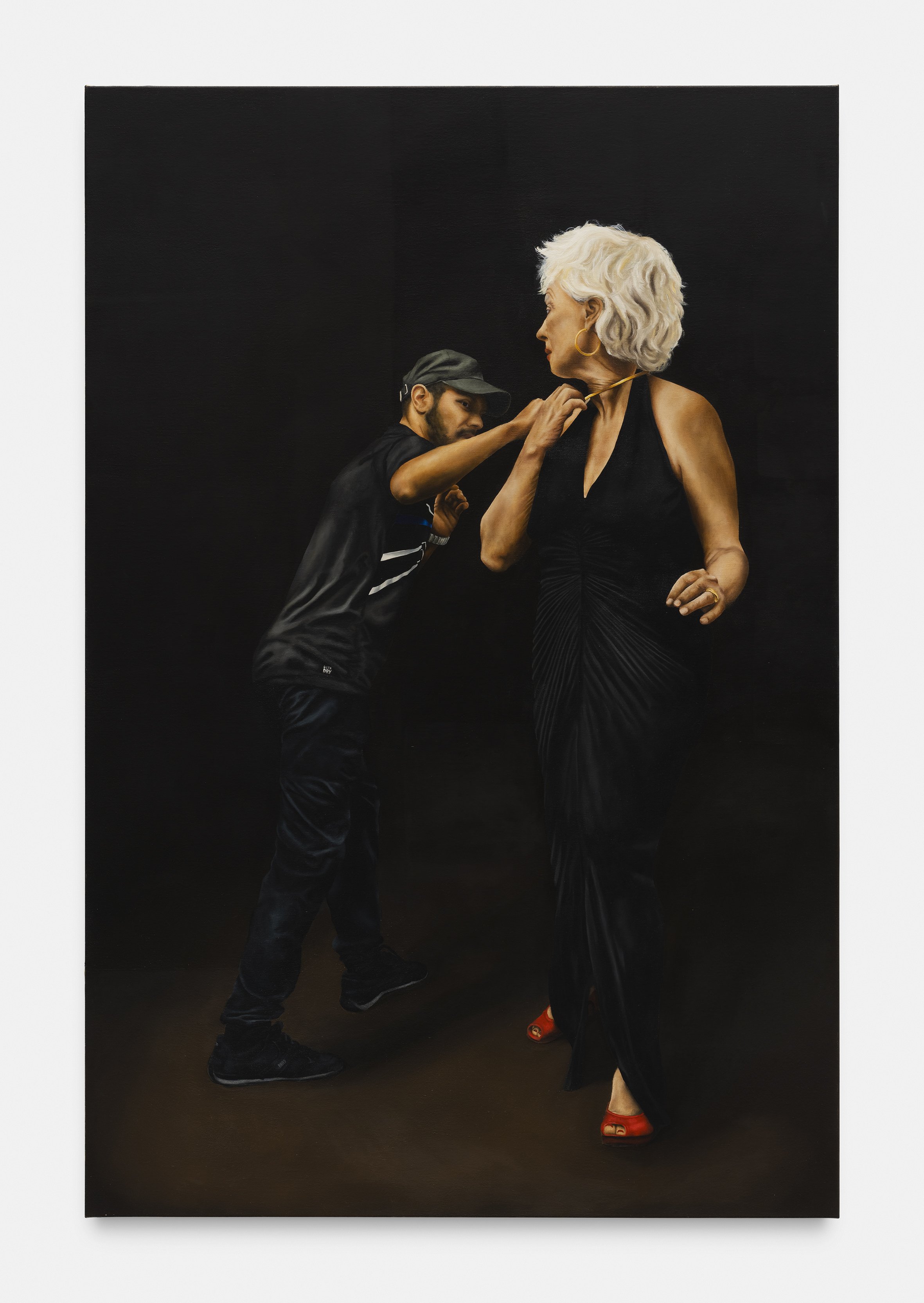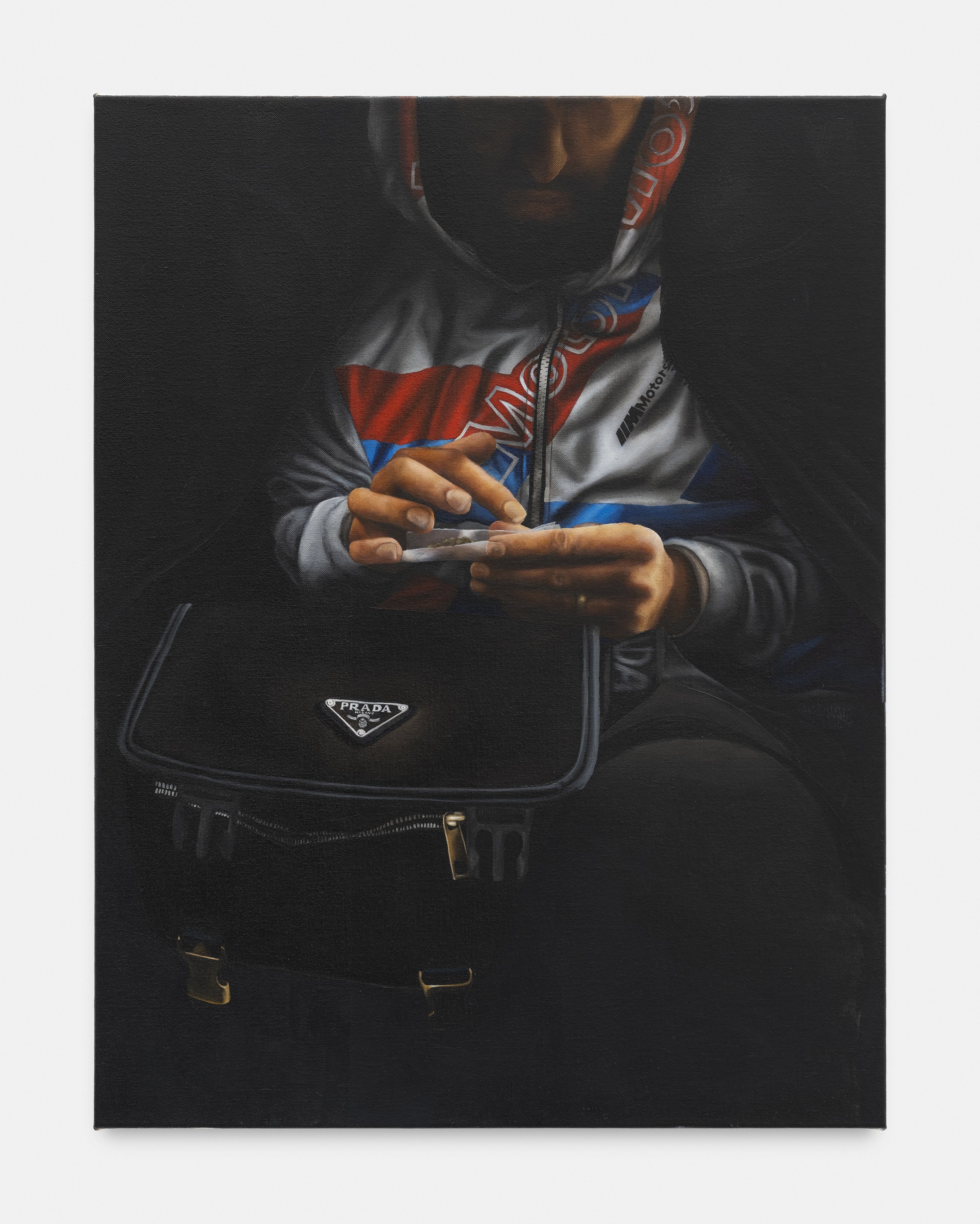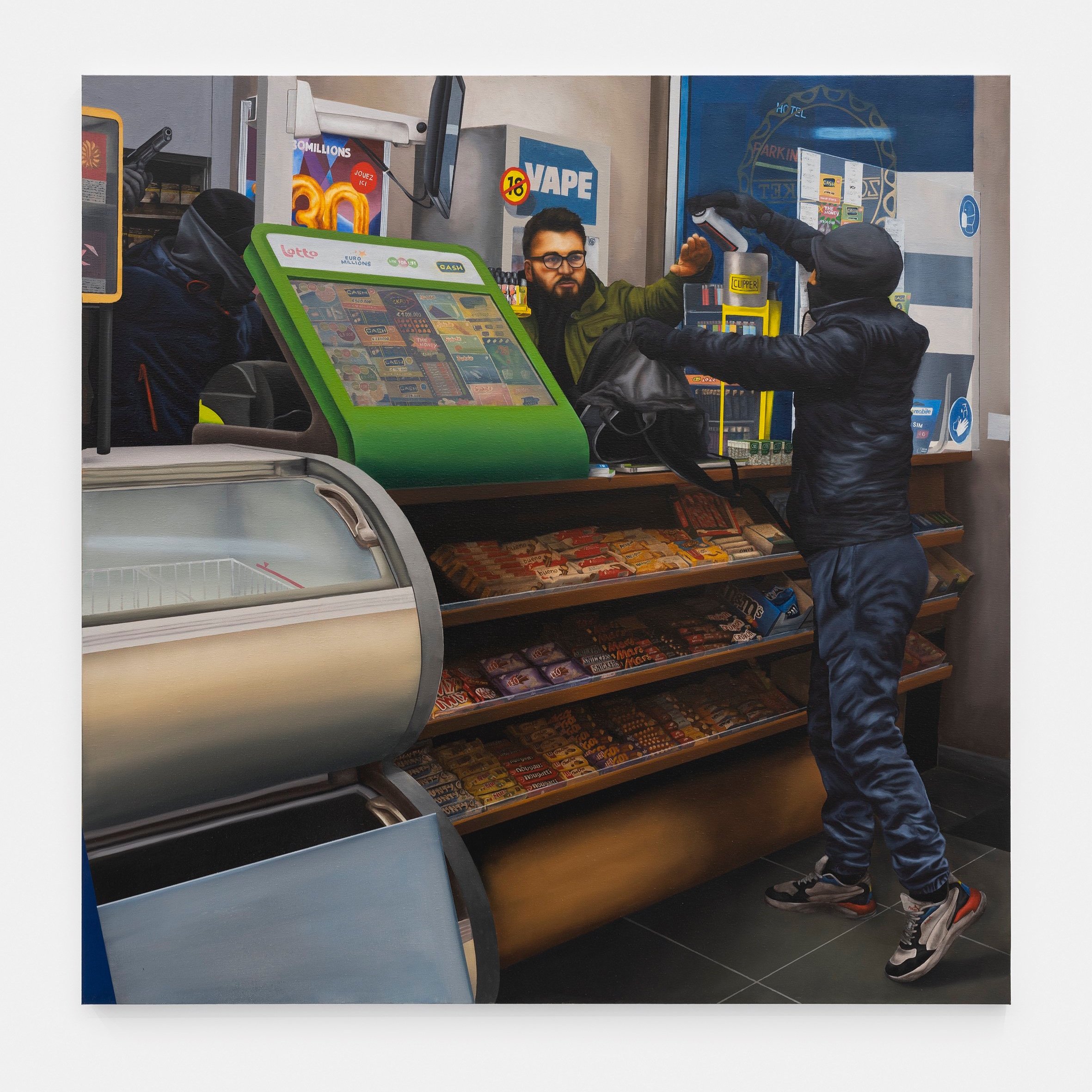Simin Jalilian, Installation view, 68projects by KORNFELD, 2025, Photo: Andrea Katheder
At 68projects by KORNFELD, Simin Jalilian’s solo exhibition is less a show and more a visceral confrontation. Marking her debut presentation of new paintings in Berlin, the Hamburg-based Iranian artist delivers works that are both urgent and introspective — a searing combination of the biographical and the political, filtered through a painterly language that resists containment.
Jalilian’s brushstrokes do not seek perfection; they pulse with immediacy. Her canvases feel alive, caught in a moment of transformation, where figures and emotions blur into a current of expressionist intensity. The visual tension is palpable: one moment teeters on the brink of despair, another radiates fleeting transcendence.
In Please Don’t Deport, the artist places herself at the heart of a haunting tableau — a deportation scene at an airport. “That’s me,” she says, directly implicating her own fears and the shadow of displacement that haunts many immigrants. Jalilian moved from Tehran to Germany in 2016, and her work speaks directly from that liminal space between belonging and exclusion. The painting is not a plea for pity but a fierce assertion of freedom — artistic, personal, and existential.
Her painting Refugees evokes another fragile threshold: a child being passed across a divide between land and sea. The moment is suspended in light, but not safety. Danger looms, and the ambiguity of survival is never resolved. In Integration, the political becomes intimate. A casual act — opening a beer bottle — becomes a coded ritual of assimilation. The moment is undercut by blood-red fractures beneath the figures, revealing how easily identity and land can break open.
Despite their rootedness in realism, Jalilian’s paintings reject photographic precision. She conjures bodies and landscapes from memory and emotion, not from reference material. The result is work that feels fiercely personal and painterly, drawing on the legacy of German Neo-Expressionism but evolving it with a distinctly female and diasporic urgency. Her mentors may include Werner Büttner, but her voice is unmistakably her own.
In The Wow Effect, even cinema-goers are caught between rapture and blindness — a metaphor for our digital age, perhaps, but also for the dissonance between spectacle and truth. Jalilian’s paintings offer no easy conclusions. Instead, they demand we remain present — alive to instability, beauty, and the enduring human will to remain free.
On view until August 23
Simin Jalilian, Installation view, 68projects by KORNFELD, 2025, Photo: Andrea Katheder




















